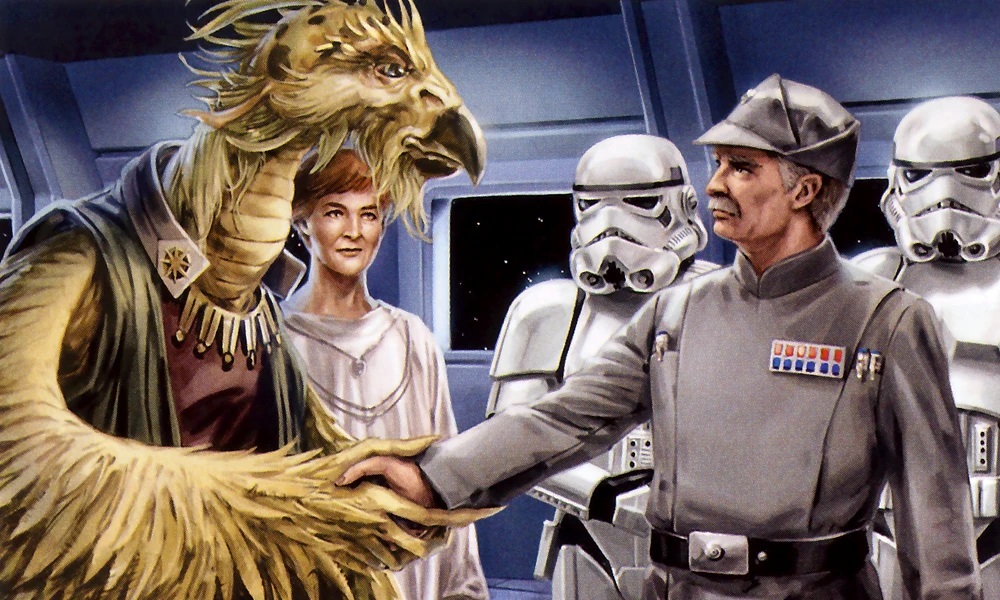

The Galactic Empire | The Sith Order | The Imperial Military
The Rebel Alliance | The Alliance Forces | The Galactic Civil War
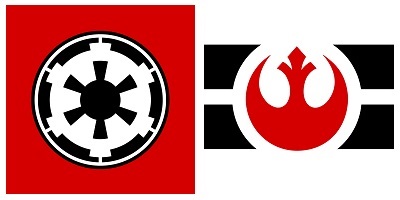
THE GALACTIC CIVIL WAR
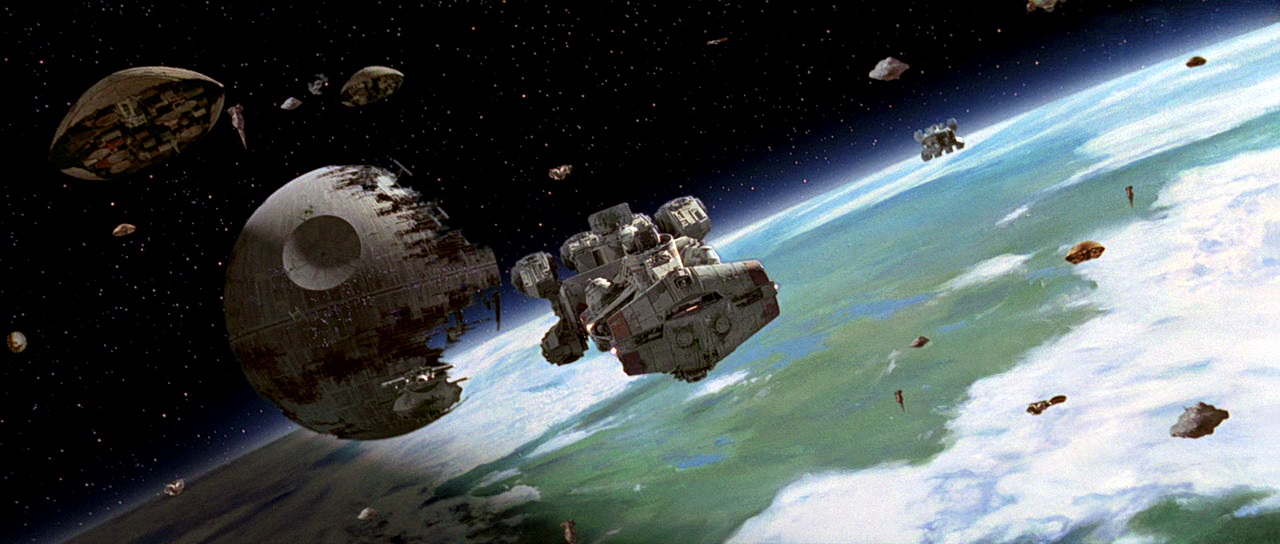
The Galactic Civil War was a continually-escalating, galaxy-wide insurgency and political revolution against the authority of the Galactic Empire, which
ultimately devolved into a bitter civil war within galactic society punctuated by a full-scale war between competing governments. The majority of
the Civil War took the form of a conflict between the Galactic Empire and a disparate and variegated movement referred to as the Rebellion,
spearheaded by a revolutionary, republican organization known as the Alliance to Restore the Republic, usually referred to as the Rebel Alliance.
There are several interpretations of when the Civil War began, however the war is usually considered to have begun by early in 7973 (4 BBY).
The war officially began late in 7975 (2 BBY), with the public declaration of the Alliance, however many within the Rebellion itself did not consider
the war to have begun until the Battle of Scarif in 7977 (0 BBY). The war officially ended in the first half of 7982 (5 ABY), and thus the war officially
lasted for 6 and a half years, however could be considered to have lasted for 9 and a half years or for just under 5 years, depending on when the war
is said to have begun. Imperial loyalists claimed the war was about defending order, security, and stability against terrorism, criminality, and chaos.
Rebel loyalists universally claimed the war was about overthrowing the tyrannical rule of the Emperor and his fascist state, but differed greatly
regarding their other goals. The Rebel Alliance's supporters claimed that the war was also about restoring democracy to the galaxy and reestablishing
a republican interstellar order. The Civil War can be broadly divided into two phases by the Battle of Endor, where the Emperor was killed. The first
phase encompassing the majority of the war took place in the Imperial era, and saw the Empire at its height battle the small and poorly equipped
Rebellion who fought an insurgent campaign which focused on guerrilla warfare. The second phase encompassing the last year of the war took place
in the New Republic era, which saw the rapidly expanding New Republic battle against the steadily deteriorating and increasingly fragmented Empire.

The Rebel Alliance served as a unifying symbol and limited support mechanism for thousands of local rebellions and insurgencies across the galaxy
during most of the war. Its actual ability to confront the Empire directly was extremely limited, however its activities allowed the many isolated
Rebel movements to coordinate actions, supplies, and strategic objectives, allowing the collective Rebellion to pose a much more significant threat
to Imperial stability. Rebel fleets and forces remained as hidden as possible, striking at strategic or unexpected points, further stretching the vast
Imperial resources, which were already being spread across the galaxy to deal with local insurgencies. The pressure this caused accelerated
the growing instability within the Empire, whose rule became increasingly precarious despite its continued strategic dominance and victory in battle.
This map shows some of the known battles from canon and legends during the part of the Civil War which took place in the Imperial era:

The final year of the Civil War took place in the New Republic era, shortly after the Emperor's unexpected death at the hands of Rebel forces. This
phase of the war saw the Empire's opponents finally able to amass and employ combat forces of sufficient size and strength to pose a direct threat
to Imperial forces on the battlefield, and thus the Civil War took on more of the characteristics of traditional galactic conflicts such as the Clone Wars.
The crisis of legitimacy caused by the Emperor's death undermined enough of the Empire's massive support structure to leave a huge power vacuum,
which the Empire's enemies rushed to fill. This critical and action-packed portion of the Civil War has not been seen in canon, so supplementary
material is presented here in lieu of canon information. The events and history post-Endor in disney-Lucasfilm non-canon material are quite different
from those in Lucas-era legendary material, but are consistent with disney-era canon material set after the war. Timeline of the unseen year:
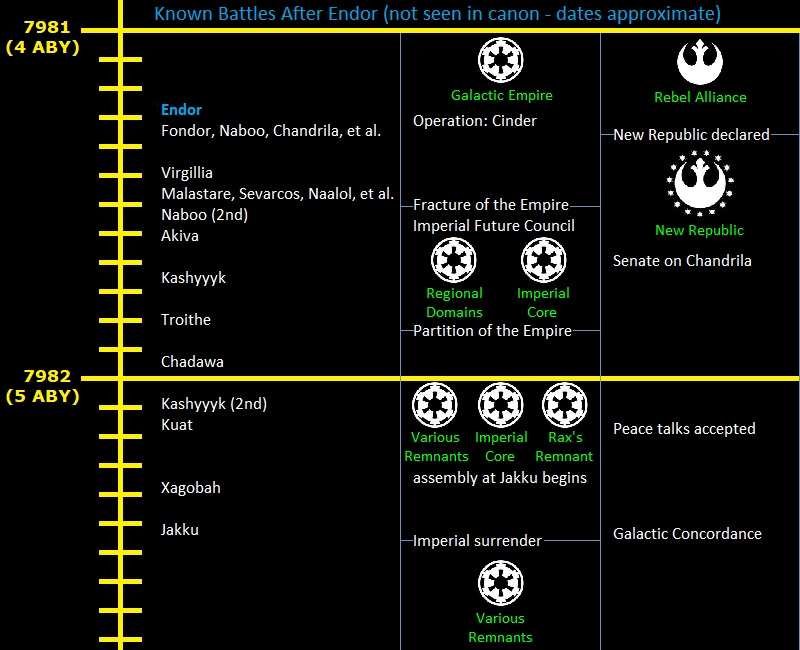
OPERATIONAL LEVEL
The material and production advantages of the Empire were staggering, as the Empire controlled virtually all major resource extraction,
industrial fabrication, and war material production in the entire known galaxy, and possessed a military of gargantuan size and strength
which was larger than any in galactic history and equipped with the largest warships and most advanced war machines ever built. The scale
of Imperial operations made it difficult to target Imperial production or resource extraction due to the extreme redundancy offered by
holding a monopoly over large-scale manufacturing. The Imperial strategy was predicated on their invulnerability to either resource
depletion or conquest by force, which allowed them to adopt an approach which treated the Rebels as a criminal gang rather than
an opposing military, which was also the political position of the Empire in regard to the Rebels. The Empire's strategy was aggressive,
and was focused on ending organized resistance as quickly and as decisively as possible. Worlds which were successfully taken by Rebel
forces were targeted with overwhelming force. Rebels were given no quarter, supply lines were squeezed, and security and patrol
efforts were increased Empire wide. As the Rebellion grew, Imperial fleets and task forces began to be stationed around the galaxy
to serve as rapid reaction forces for a given region of rebel activity. These fleets served as the nexus of intense probe sweeps and other
means of investigation aimed at locating Rebel forces or bases. Imperial strategy revolved around preventing the Rebels from attaining
safe harbors, production bases, and most especially control over populated planets, thus preventing them from ever challenging
the Empire's stranglehold over materials, equipment, and labor forces. The Empire maintained sufficient defensive potential by both
enlistment and conscription, providing the Imperial military with a huge infantry force which was considered highly expendable.
The Empire did at times compromise their tactical effectiveness to serve their political objective of capturing Rebel leaders alive to make
examples of. Imperial strategy evolved to take advantage of the Rebels' supply issues and political objectives, adopting a strategy of
setting traps to lure in Rebel forces, or encouraging them to amass their forces to be ambushed, which further constrained Rebel actions.
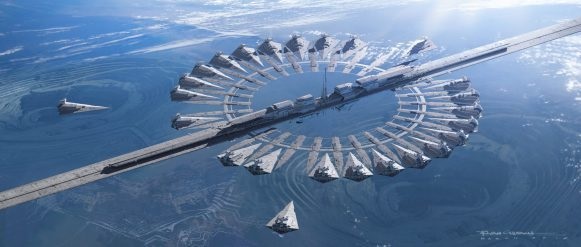
The power, size, and reach of the Empire during the majority of the war made it difficult for the Rebels to accumulate, supply, and organize large
forces, and nearly impossible for the Rebels to control territory, populated worlds, or significant production facilities. The power of the Rebel
military equipment was limited by the Imperial monopoly over warship and military equipment production in the galaxy. Their resources were
primarily stolen or misappropriated Imperial equipment, outdated arms and craft from the Clone Wars, repurposed civilian equipment, and
military and security technology legally still available to civilian entities within the Empire. The lack of significant resources and supplies was
a severe limitation, but it also made the resupply needs of their forces modest enough to be met through illegal channels and unmonitored
means. Rebel strategy when facing a galaxy-wide Empire with huge resource advantages and a vastly superior military was to fight a guerrilla
campaign of targeted attacks. Their strategy was aimed at turning the Empire's advantages into strategic weaknesses. Imperial strategy relied
on overwhelming and superior forces, however as this was geared towards repelling large-scale assaults, it provided opportunities for Rebels
to use smaller, mobile forces to exploit small weaknesses rather than attempt to fight head on. The Empire's strategy of controlling everything
and everywhere they could meant that they must spread their forces to protect their domain, which allowed the Rebels to launch unexpected
attacks where their gathered forces could win objectives and even battles without incurring unacceptable losses. The Rebels relied on their
fleets as the basis of their operations, as they were mobile and could usually hide at safe locations in interstellar space. This allowed them to
survive during the critical years of the conflict, however the size of their fleets were severely limited by their inability to maintain surface bases
to support them for very long without being discovered and destroyed by the Empire. As the war progressed, the Empire became too occupied
to successfully monitor every corner of known space. This allowed manufacturers associated with the Rebellion to begin producing fighters
and starships for the Alliance for the first time, production which would increase significantly in the last two years of the war. Rebel strategy
was long-term, a realistic approach when faced with the task as great as overthrowing the Empire. The strategy was for the Alliance to pick
its battles, attempt to grow, but most importantly to survive. They were a symbol and a tactically important organizing force for the rebellions
around the galaxy, and they posed a menace to the Imperial fleet which required extensive resources to guard against and search for. After
surviving for years, the Alliance's strategy of fighting a symbolic war proved to be very effective in undermining the stability of the Empire.
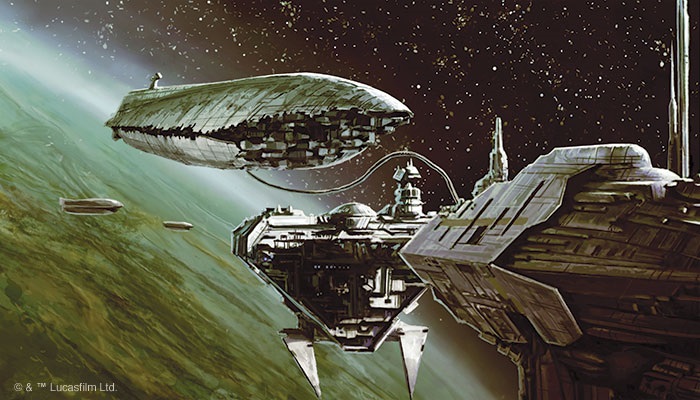
The Imperial political and military strategy in the Civil War also centered around the Sith obsession with superweapons, in particular Emperor
Palpatine's Death Star battlestations. Although famous for the ability to blow up an entire planet, the true power of a Death Star was its ability
to vaporize entire starfleets. The Empire could destroy all cities on a planet by orbital bombardment, or use other more powerful conventional
weapons to render a planet uninhabitable without a Death Star, but Imperial fleets could still be theoretically defeated in combat. The threat
of the Death Star was not just its incredible power, but also the unlikelihood of destroying or even damaging one before it could obliterate
the entire attacking force. Palpatine's Imperial program had evolved to the point that he could finally do away with the Senate and rule as
a despot, but in order to checkmate his opponents he needed his impenetrable mobile battlestation to be operational, to instill fear of rising up
against such a move. The destruction of Alderaan demonstrated to the galaxy what the Imperial military could do and how far they would go,
and that planets which were guilty of resisting the Empire would be blown away in retaliation. This kind of terrifying overreaction should have
effectively discouraged resistance on any populated world. If enough of a planet rose up, they would be destroyed, and if smaller groups
emerged on planets, most of the population would try to destroy them to prevent that from happening to them. There would effectively be
no resources available for a rebellion. While the destruction of Alderaan would have been irrelevant to the Empire if the Death Star survived
the Battle of Yavin, it ended up having the opposite effect. Once the planet was destroyed the Empire's true face had been revealed to the galaxy,
and this created a large surge in support for the Rebellion in public opinion. The decision to begin a second Death Star immediately after
the first station's destruction was not only a Sith priority but also a tactical necessity for the Empire. The Empire needed the weapon to stop
the rebellion before it became impossible to contain, a situation it created for itself by openly destroying Alderaan. That move was only
politically viable and an effective deterrent as long as the Empire's ability to destroy a planet or entire fleets at will remained. The Emperor's
plan was for the Imperial military to rule the galaxy with force long enough to complete the second station. Once that Death Star was
operational and its interior was properly armored the Empire would have been able to win the Civil War and reestablish galactic tyranny.
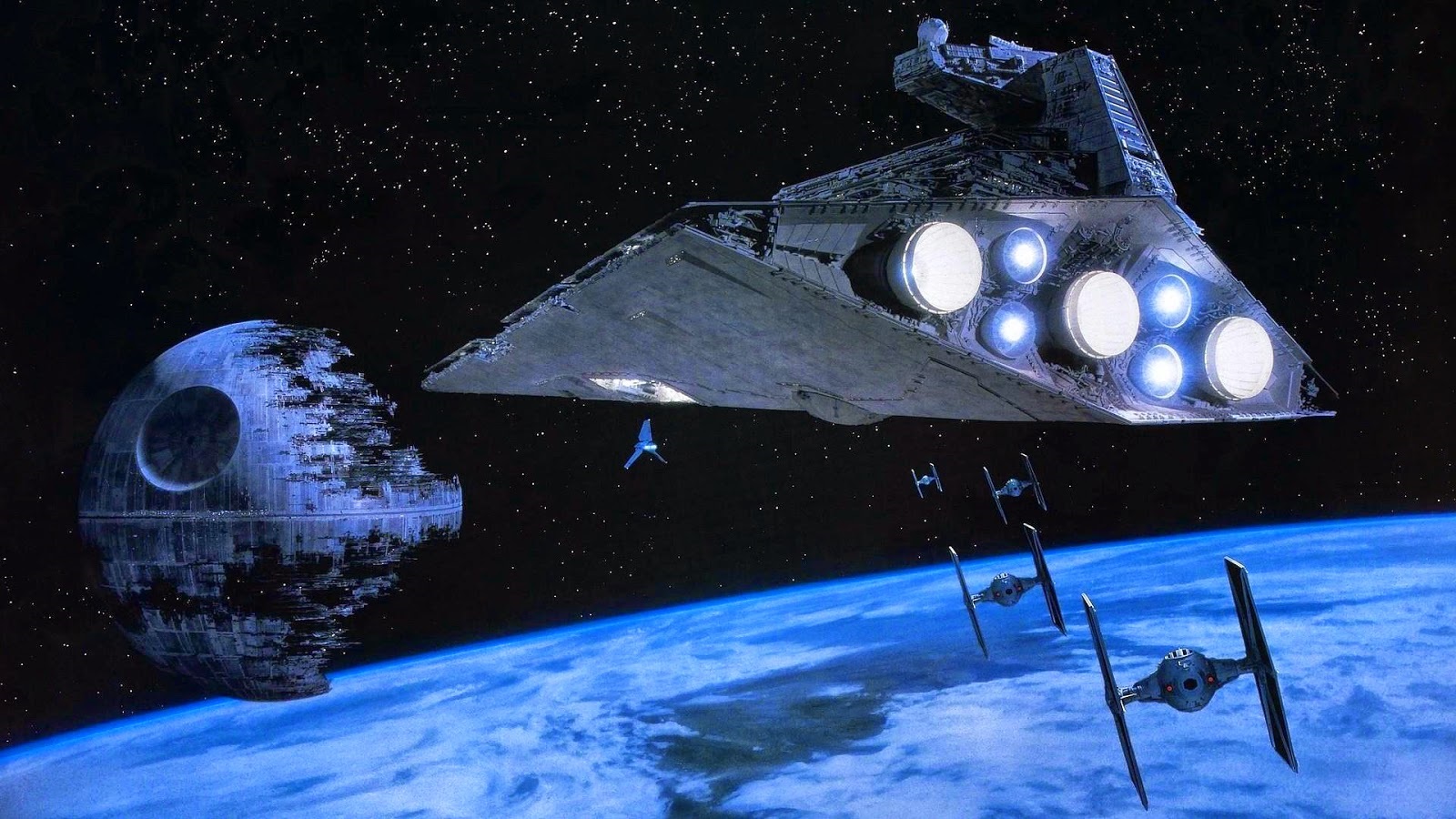
After the Battle of Endor, the entire structure of the war changed in terms of politics, economics, military forces, and strategic objectives.
The Empire's massive advantage in materials, military equipment, labor forces, and production bases was steadily whittled away by uprisings,
defections, internal competition, and piracy over the first few months, while the Empire's central command was hamstrung by competing
authorities and the rapidly deteriorating security situation. At the same time, hardcore Palpatine loyalists began to enact his posthumous
orders to destroy key components of galactic civilization in revenge for his death. As a result, the Empire's offensive activity was severely
reduced, and its massive forces held back to defend holdings and maintain order. Even as some Imperial coordination temporarily improved,
the various regional governors and force commanders were increasingly reluctant to use their dwindling resources to aid each other, while
the New Republic military continued to grow. The Imperial strategy to rebrand itself as the force for stability and security was severely
hampered by the brutal reprisal after the death of the Emperor, eventually eroding Imperial support beyond the point of maintaining
strategic potential. The Alliance, reconstituted as the New Republic Defense Forces shortly after the Battle of Endor, were quickly inundated
with new recruits, new military equipment, and starships, and for the first time large numbers of populated planets which were supportive
or became members of the New Republic. Their strategy was to continue to build their capacity while targeting Imperial military resources,
while mostly avoiding attempts to invade populated worlds which were loyal to the Imperial order. Their strategy during Operation: Cinder
was to prevent as many targets from being destroyed as possible. After that crisis, the New Republic's strategy focused on building a force
capable of winning the war no matter how long it might last, and in isolating the stable pockets of Imperial rule which still remained.
Most smaller Imperial remnants were largely ignored as non-threatening, while the largest and most stable remnants were targeted.
The New Republic chose to surround the Imperial Core worlds and Coruscant, preferring to force capitulation and avoid bloodbaths.

GALACTIC CONFLICT
In many ways, the Civil War was an uninterrupted continuation of the Clone Wars, as anti-Imperial activity began days before the Empire was
officially established. Those forces opposed to the centralized control of the government on Coruscant were driven underground by the defeat
of the Separatist Alliance, but their numbers had grown due to the many citizens who strongly rejected the Republic's transition into an Empire.
Many Separatist elements which did survive the war quickly transitioned into some of the first rebel cells. The Clone Wars were instigated by
Sidious' efforts to coalesce and agitate a Separatist Movement against the Republic, however he designed the war to end without addressing
the issues which started the war. On the contrary, all the features of the Republic which the Separatists objected to were significantly more
pronounced after the establishment of the Empire. One good comparison of the relationship between the Clone Wars and the Civil War is that
of WWI and WWII. The 'Great War' never ended in east Asia, and could be considered one long war lasting over 4 decades. Even in Europe,
the issues between nations raised before WWI were often unsettled, and those which were had often made the situation much worse in
the eyes of many. These discontent forces within the population would need a generation or two in order for society and resources to be
reorganized into another war, but the ideologues which propelled both conflicts remained eager to settle things in their favor. The primary
elements of the Rebellion were former Separatists or those of similar ideology, Republic loyalists, and independents interested in planetary
sovereignty. Those favoring independence or confederation were eager to fight the somewhat benign Republic, and are all the more eager
to oppose the Empire. Republic loyalists sided with the Republic's imperialist activities during the Clone Wars because they believe in unity
and the importance of an interstellar order and the rule of law. They were willing to fight to preserve democracy and republican government
during the Clone Wars, and are just as willing to do so again. The major difference between the two conflicts is that corrupt economic interests
with unreasonable influence in the galaxy were at the center of both sides during the Clone Wars, thus undermining the integrity and purpose
of those fighting for what they believed in. In the Civil War, the honest elements of both sides in the Clone Wars are united together against
the corrupt galactic establishment, and those who value power over ethics. On the other hand, the war material producers within the Imperial
military-industrial complex who stoked the Clone Wars also pushed for this conflict, making huge fortunes building the bloated Imperial war
machine, all the while knowing their craft were being obtained by the Rebels. Encouraging political conflict once again brought great profits.
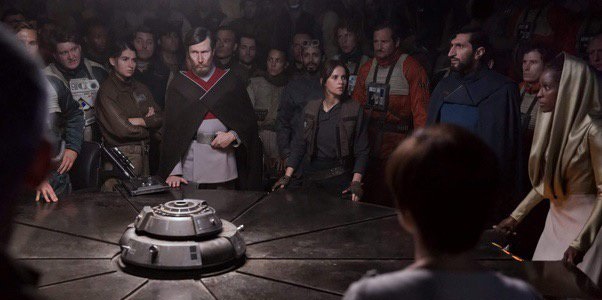
The Empire also faced a legitimacy crisis from its very beginning, and the political apparatus put in place to mitigate that issue established
a political divide which would eventually prove impossible to reconcile. The Empire was a faux democracy, a fact which was relatively
transparent to those who suffered under the Empire or opposed its means, but one which the Empire's many billions of ardent supporters
were likely to either ignore or not believe in. Palpatine had used his legally-accrued powers to crown himself Emperor, and thus his move
was seen as either legal or illegal depending on how one chose to view it. On the other hand, it was his authority as Senate leader which
made his ascension legal, and thus Palpatine was obliged to maintain that body as the symbol of his legitimacy in the transitional first decade
and a half of the Empire. Senators were figures of limited political power who were largely figureheads which allowed the idea that there
was still democratic participation in the government. This sword inevitably cut both ways at times, and the Senate's forum for voicing some
criticism of Imperial actions required Palpatine's government to play nicer than it wanted to, to cover its tracks, and to otherwise engage
in a time and effort consuming political dance to maintain some semblance of due process. Discontent in the Senate about harsh Imperial
actions leading up to the Civil War and fear about losing their personal power and status within the Empire eventually led to a growing
sympathy in the Senate for the reformist aims of the Rebel Alliance. Many fiercely rebellious worlds determined much earlier than the Civil
War that the Senate was incapable of redressing their grievances, and that democracy did not exist in the Empire. The many doomed
planetary rebellions which took place in every era of Imperial rule may have done little to free their planets, but they did keep the issue
of resistance to the Empire as an active part of the political conversation in the Senate and across the galaxy, fueling the march to war.
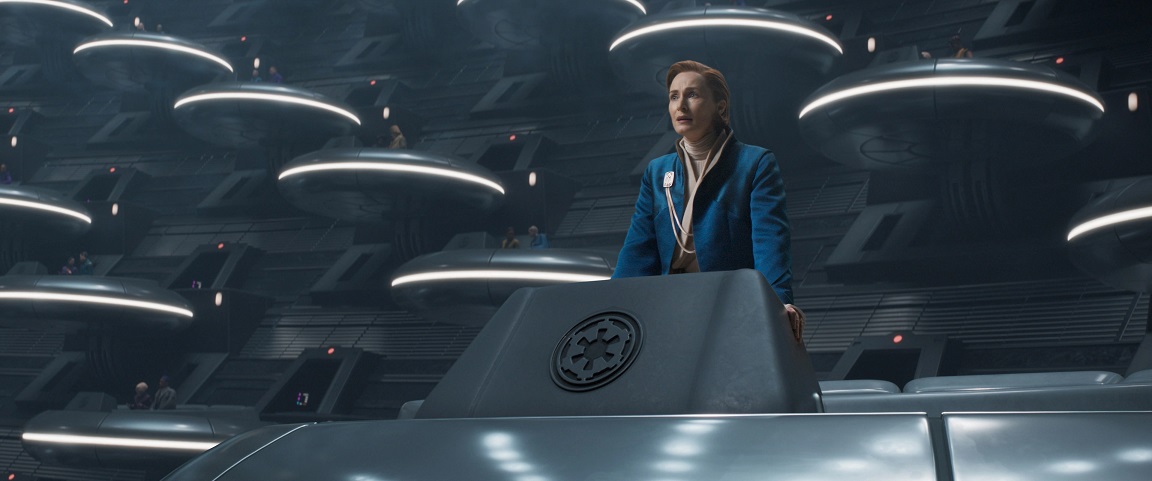
The nationalization of the economy, the massive programs of forced labor, and the destruction of independent trade networks under
the Empire created a huge groundswell of resentment towards the Emperor and his government. The process of imperialization of
the galactic economy had slowly but steadily transformed the galaxy's bloated capitalist system into a fascist one, where corporations
were either arms of the state or run by members of the ruling political party. This initially extended only to the military and heavy
industries, the former galactic trade guilds, and megacorporations in specific fields, however the scope of nationalization was gradually
increased over the next decade. The Empire had started to nationalize all commerce in the central systems by the time of the Civil War,
integrating the last remaining free enterprise into the state apparatus. Labor was mandatory and often involuntary, and since the state
was essentially the sole employer, everyone essentially became a state laborer, or a slave, or serf, or indentured servant, depending on
how one looks at it and on each worker's specific situation. The Empire's strict and overzealous legal system kept the Empire burgeoning
with forced laborers, while those who were able to avoid such fates were essentially bonded serfs, slaving for the greater glory of the Empire.
Although the final stages of nationalization had not yet reached most planets in the Rim regions at the time of open warfare, the program
had been evolving so quickly in years leading up that a great panic had gripped those who feared losing what little independence they
still retained. This created a great enthusiasm for the Rebellion among the working class, and led to increasing enlistment in the Alliance.

The Civil War was also driven by a deep divide within the interstellar culture of the Empire between those who saw the Empire as a needed
force for stability and those who saw it as an oppressive, totalitarian state. This crisis of identity is the same divide which created the Clone
Wars, and the reason why so many in the Republic welcomed the transition to the Empire. Despite the many atrocities of the Empire and
its invasive security state, many worlds prospered greatly under the Empire just as they had under the Republic, particularly in the Core.
Their economic dominance over remote, resource-filled worlds, along with an even more prominent position in galactic politics, made
the majority of citizens on many populated worlds loyal to the Empire and enthusiastic about most of its apparent goals. Once rebellion
began to grow, these pro-Imperial voices advanced the narrative that the struggle was about order vs chaos, and that the Rebels were
little more than criminals, terrorists, and Separatists. As the Empire was strained by the ongoing Civil War, the economic and security
stability of these worlds began to diminish, reinforcing this premise and even encouraging enlistment in the Imperial military. Rebel
supporters advanced the narrative that the struggle was about freedom vs tyranny, which was an increasingly popular sentiment with
each passing year of Imperial rule. The Imperial response to the initial actions of the Alliance seeking diplomatic resolution through
the Senate greatly increased the potency of this message, which in turn led the Empire to destroy Alderaan in a demonstration of intent.
This action essentially proved the validity of the Rebel position, while showing the galaxy the true face of the Empire. The subsequent
increase in anti-Imperial sentiment probably turned the overall tide of public opinion against the Emperor, fueling the growth of rebellion.
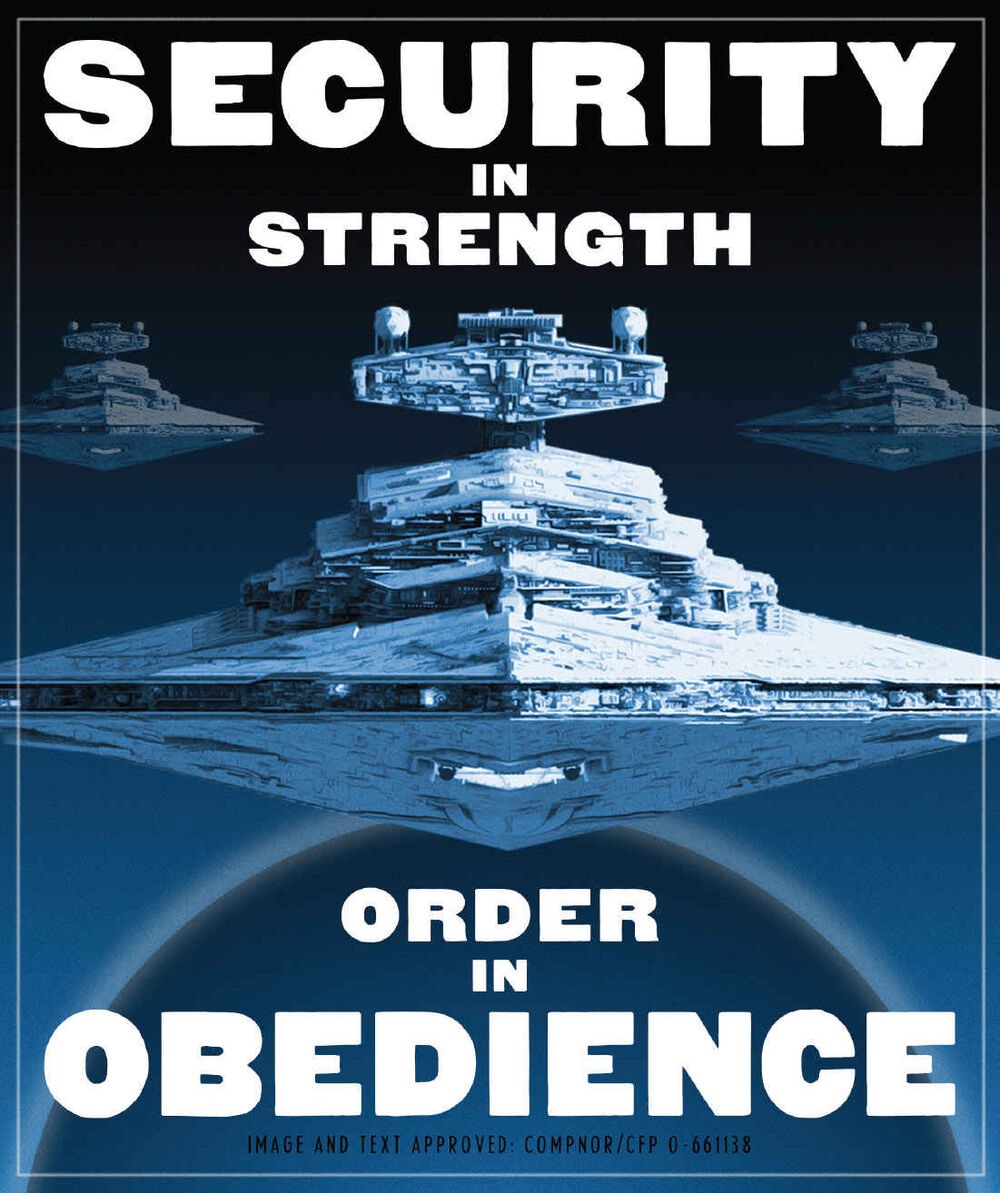

7958 (19 BBY) to 7974 (3 BBY)
Opposition elements among Republic loyalists during the Clone Wars were supportive of the war effort but remained critical of militarization,
the rise of the security state, and restrictions on rights and democratic processes. Some opposition in the Senate began to organize against
Palpatine before he declared himself Emperor, realizing something of his intentions regarding the political transformation of the state.
Senator Mon Mothma of Chandrila and Senator Bail Organa of Alderaan created a small network of hardcore republican elements intended
to resist the new order by whatever means might be necessary, having realized the Republic may have become so corrupt that it should be
opposed, even with force. This is of course exactly what honest supporters of the Separatist Alliance had maintained. The Separatist worlds
believed correctly that the Republic was corrupt, imperialistic, and undemocratic. Sidious therefore organized these troublesome rebels into
an organization to fight the Republic, not only so that they could be eliminated as a threat, but also so that the Republic could embrace its
identity as a corrupt, imperialistic, and undemocratic organization, and become a stronger and more centralized version of itself. In many
ways, the Separatist Alliance was the precursor to the Rebel Alliance, which was eventually born from the movement to restore democracy
in the Senate. Many of the more genuine elements of the Separatists would eventually ally themselves with Organa and Mothma's Rebel
organization. In the first decade and a half of Imperial rule, Senator Organa and his allies ran an underground network of republican
partisans and intelligence agents. Many of the small republican forces throughout the galaxy were aimed at the Empire, while others were
opposing criminal empires, megacorporations, and the other petty tyrants the Empire passively encouraged during its rule. All of these
disparate groups had two things in common, a desire to return to democratic rule galaxy-wide, and to end tyranny and re-establish republics
on their various worlds. Individually they posed little threat to the Empire, but together they represented the seeds of a coordinated
rebellion which finally began to coalesce by 7975 (4 BBY). This Rebellion began to grow in response to the incrementally increasing tyranny
of the Empire, and the decrease in war-weariness after a new generation who did not experience the Clone Wars had reached adulthood.
While the importance of potential rebel fighters was significant, far more important was the work Organa and his allies did to coordinate,
collect, and utilize intelligence gathering and occasional small-scale sabotage. Working from within the Empire, Organa, Mothma, and their
agents did far more to help the cause than they could have by impatiently standing up to the Empire openly in a futile display of principles.
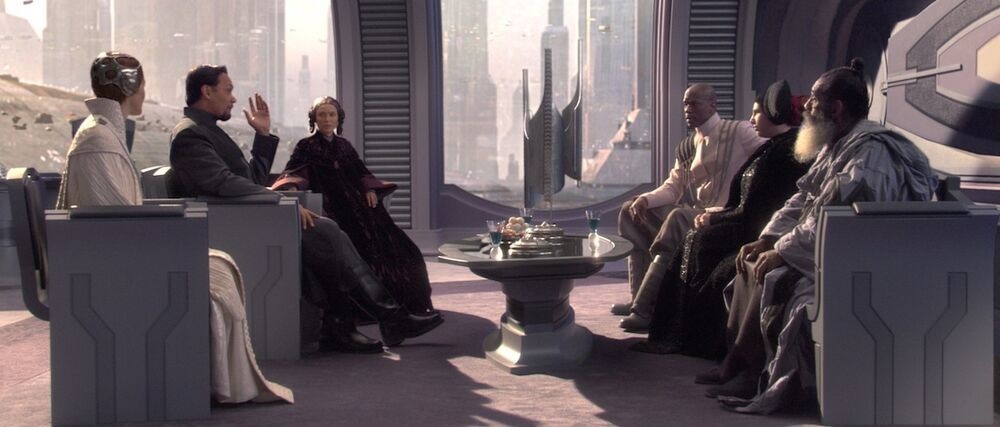
The Empire was a highly-centralized, authoritarian, constitutional monarchy with a predatory capitalist economy being slowly transformed
into a fully fascist economy. The Empire's fascist ideology celebrated their militarized society, repressive police state, and the subservience
of the individual to the state. Many billions of people were victims of the Empire over the years of Imperial rule, some of the violence of
Imperial policy, and the rest from the passive oppression, misery, and unnecessary hardship created by the Imperial system. In addition,
the Empire preferred to save effort and resources by officially or unofficially relegating the task of oppression and enslavement to criminal
empires, megacorporations, and petty tyrants. Their victims were fully aware that the Empire did not care about a "safe and secure
society" for everyone, and many correctly determined that the Imperial system was to blame. The policies and realities of the Empire
therefore created large numbers of rebels who were motivated by practical response rather than ideology. These groups usually fought
Imperial proxies and criminal groups given free rein, but also stood against the Empire, and increasingly so as the Empire consolidated
its rule over the galaxy. At times, entire planets would rise up in response to Imperial oppression, motivated only by a desire to remove
the Empire from their worlds. As helpful as the Rebel Alliance would eventually prove to many of these groups and planets, it was these
rebels who formed the greater part of the Rebellion. The Alliance would have been unlikely to succeed or even survive for years during
the Civil War without the distraction posed by these movements, who diverted huge percentages of Imperial military resources.
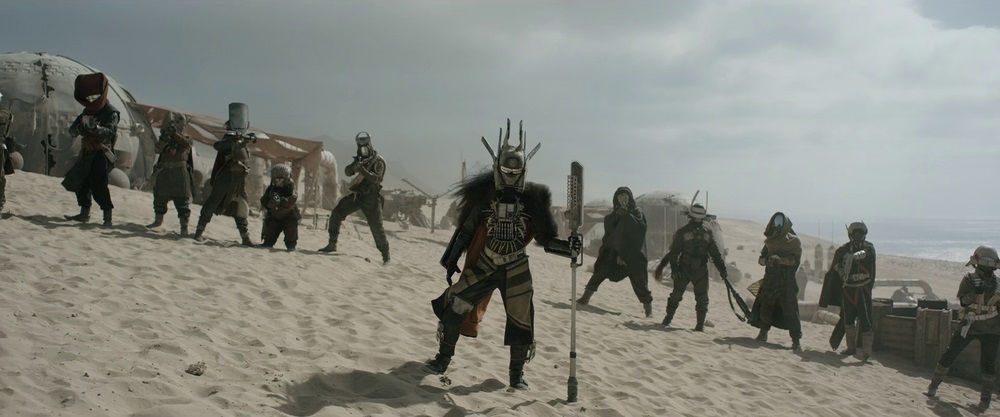
Palpatine destroyed the Jedi Order because he knew that the Jedi are "relentless" and would not allow the rise of a political order controlled
by the Sith. His prediction that failure to destroy the Jedi would result in "civil war without end" was of course proven correct, as the Jedi
will always seek to galvanize the many allies, organizations, and planets which share their values. The total number of survivors of the Great
Jedi Purge in 7958 (19 BBY) is unknown, although hundreds are believed to have survived the initial attack. Most of those were killed not
long after, usually on the same planet as when the order was given. Those which did survive the initial phase of Order 66 mostly went into
hiding, and those Jedi which did attempt to establish a resistance immediately after the purge were easily targeted and eliminated. George
Lucas has indicated that perhaps over a hundred Jedi survived Order 66, however some of those Jedi were killed by the Empire or others
in the first decade and a half of Imperial rule. Some Jedi adopted a strategy of preserving the Order for a future time period, focusing on
training new students. Some of these surviving Jedi did actively work to undermine the Empire, allying themselves with rebel movements
across the galaxy. At least five Jedi are known to have worked with the Rebel Alliance itself, and it is likely there were at least a few more
Jedi somewhere in the galaxy involved in some aspect of the Rebellion. Resistance to oppression was a central tenant of the Jedi religion,
and a value shared with anti-Imperial forces. As Knights of the Republic, the Jedi could not abandon their duty to fight to restore democracy.
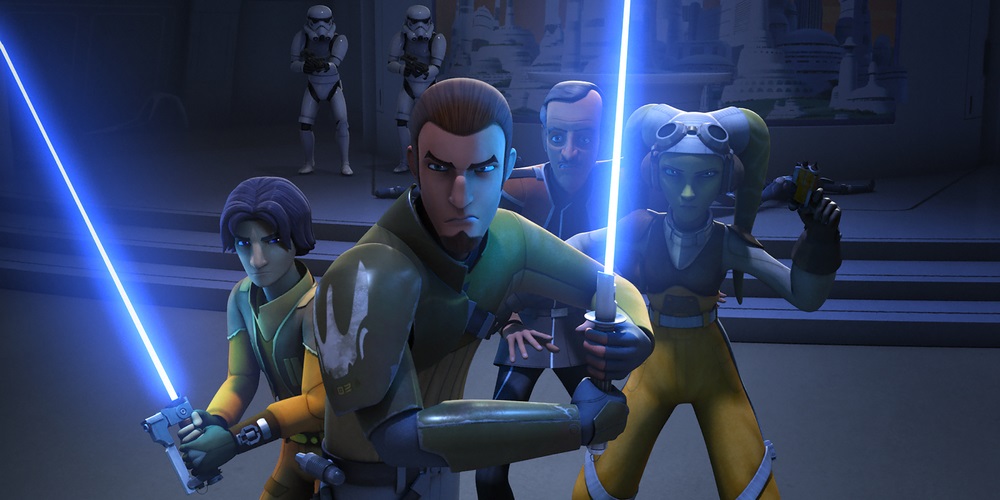
The rise in rebel activity in the last few years before the official declaration of the Rebellion led to increasingly harsh or disproportionate
Imperial responses. This exacerbated the political crisis caused by the Rebellion in the Senate, and created a greater sense of possibility for
those who were previously reluctant to stand against the Empire. The increasingly occupied Empire allowed the fledgling Rebel Alliance to
coalesce as an unofficial organization. Senator Organa's intelligence network had identified and linked up with potentially hundreds of
republican resistance groups, former Separatists, others with anti-Imperial sentiments. Some of those cells had already created military
formations and had been supplied with craft and equipment by those working from within the Imperial power structure. The Fulcrum
intelligence network which did most of this leg work had pushed rebel groups to maintain a low profile and avoid attracting serious
Imperial attention. Cells were not supposed to meet or know each other, to avoid rebels exposing the entire network under duress or
torture. The seriousness of the Rebel threat led the Empire to adopt a far more vigorous program to destroy rebel cells, initiating a period
of regular, small-scale combat and limited actions between rebels and the Empire. The Rebel network changed their protocol regarding
joining cells, and began to amass larger forces to meet the demands and challenges of this escalating conflict.
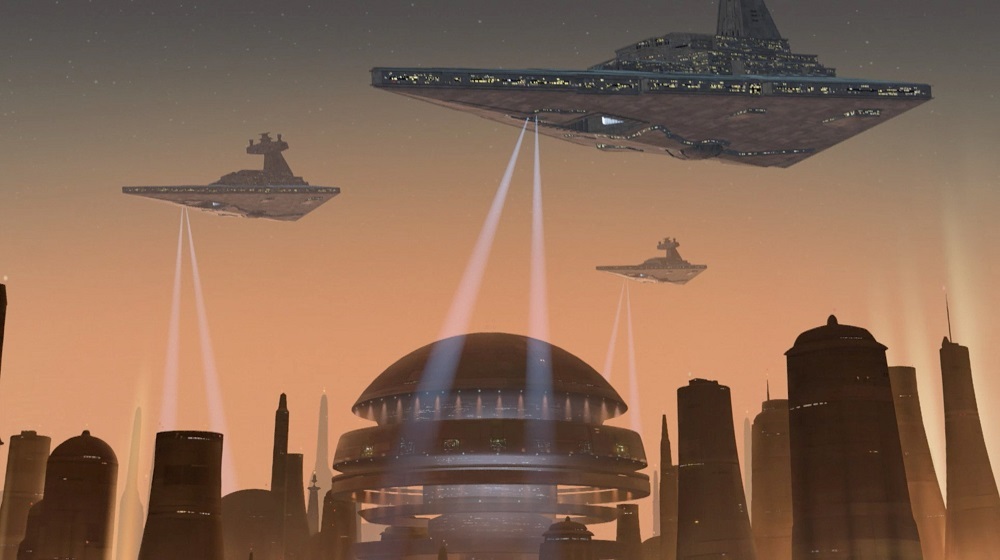
7975 (2 BBY)
Although the war is generally considered to have already begun, the unofficial network of Rebel cells was still largely engaged in building its
fighting capacity by early 7975 (2 BBY). The Empire became alerted by the pattern of Rebel theft, and accelerated its program to locate and
destroy as much old military equipment and as many battle-capable ships as possible. This reduced the material available to forces that
wished to resist the Empire, and continued a program Sidious began during the Clone Wars to eliminate the diverse combat potential of
the galaxy and limit new ship production and sale to officially sanctioned entities. This reduced the mobility and disparate independence
of people and private groups, thus contributing to all aspects of the Imperial program including security. Conversely, the Rebels were in
dire need of even decades-old equipment in order to take advantage of their growing organizational strength. Combining their forces had
exposed the Rebels somewhat, but was a necessary step in moving from active resistance, theft, and sabotage to actual strategic warfare
against Imperial resources. The Empire moved to increase their security crackdowns and even supply blockades of troublesome worlds,
both to limit Rebel supplies and punish their sympathizers. This also served to entice Rebel groups to assist these populations, drawing
Rebel forces out to be engaged. Rebel efforts to alleviate food and supply shortages using their scant resources were driven by their
central purpose to restore civility and humanitarianism to the galaxy, but also served to preserve the lives of Imperial opponents, and to
build good will with potential future allies against the Empire. Imperial analysis of Rebel tactics allowed them to improve their responses.
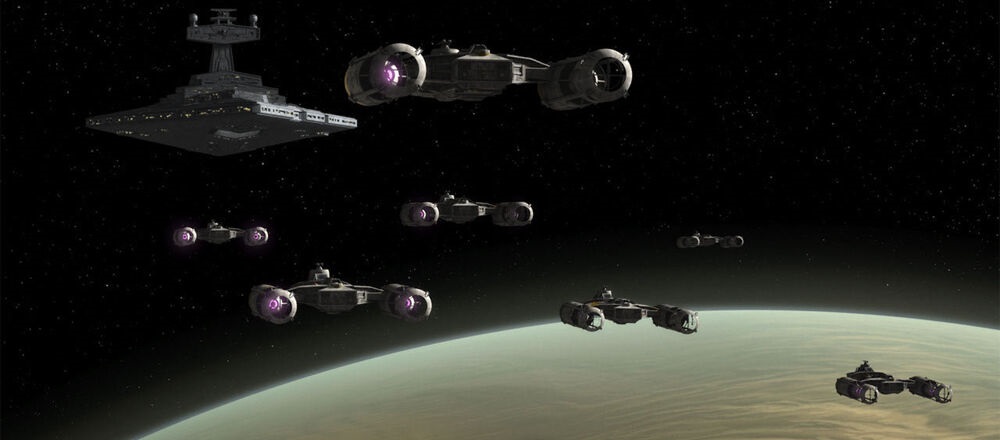
The Empire's "brutal" reprisal against non-violent resistance on Ghorman served as the catalyst for the defection of Mon Mothma and
the official declaration of the Rebel Alliance and their open struggle against the Empire. The Imperial responses to the unraveling security
situation in the galaxy had grown increasingly harsh, and began to cause backlash in the Senate. Mon Mothma's public condemnation of
Palpatine created political shock waves which emboldened opponents of the Imperial system. The unification of the Alliance to Restore
the Republic out of the network of allied Rebel cells, and the public declaration of armed resistance against the Empire, marked the official
beginning of the Galactic Civil War, in the later half of 7975 (2 BBY). This organization presented a far greater threat to the Imperial military
than any of the cells on their own, but more important was its institutional challenge to Imperial authority, as it represented an alternative
galactic government in exile which despite its lack of actual power did stand as a potential alternative to loyalty to the Empire, and its very
existence suggested to the galaxy the possibility that the Empire is illegitimate. Defection of Imperials and recruits increased dramatically.
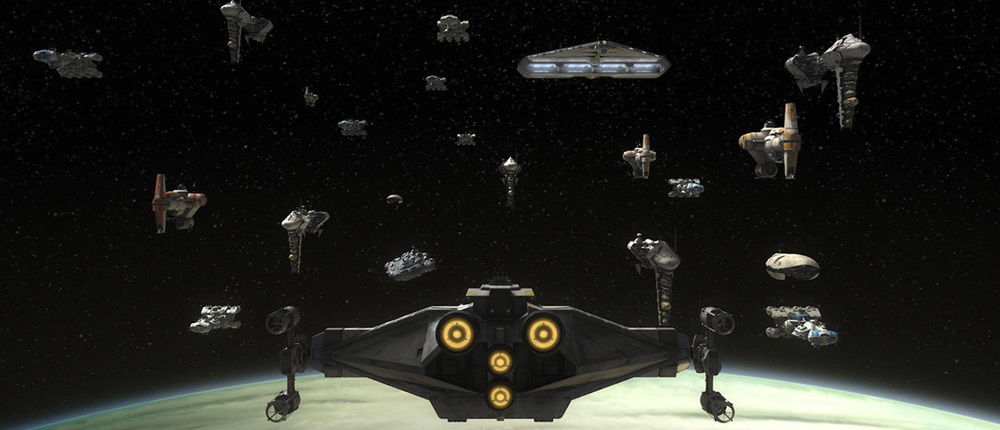
The Alliance attempted to leverage its combined strength to launch more significant attacks against Imperial strategic resources. This meant
losing the advantage of small cells which had been a big part of safeguarding the movement. The Empire encouraged Rebels to amass their
forces in order to inflict more devastating blows to the Alliance. The Battle of Atollon was the first true naval battle between the Alliance
and the Empire, and is sometimes considered to have been the first official battle of the Galactic Civil War. The Empire demonstrated that
its intelligence efforts to counter the Alliance had largely proved successful, and that Rebel forces were far from ready to confront them
on an even playing field. This battle also revealed that despite the unity of the Alliance, its leaders were unwilling to commit their other
resources to rescue Rebel forces caught in a losing battle, out of fear of losing their entire organization. The prevailing notion amongst
Alliance leaders was that this battle proved they were ill-prepared to fight a single major engagement, let alone a full-scale war. This battle
did, however, also demonstrate the value of the Alliance's work to build a network of unaffiliated partners amongst local rebel movements,
as rebel Mandalorian allies were able to save the core of two important Rebel cells from being captured by the Empire. This connection
between the Alliance and the larger rebellion in the galaxy laid the groundwork for a much larger rebel structure which would be necessary
to successfully fight a full-scale war with the Empire. The Imperial victory did temporarily reduce the capacity and activity of the Alliance.
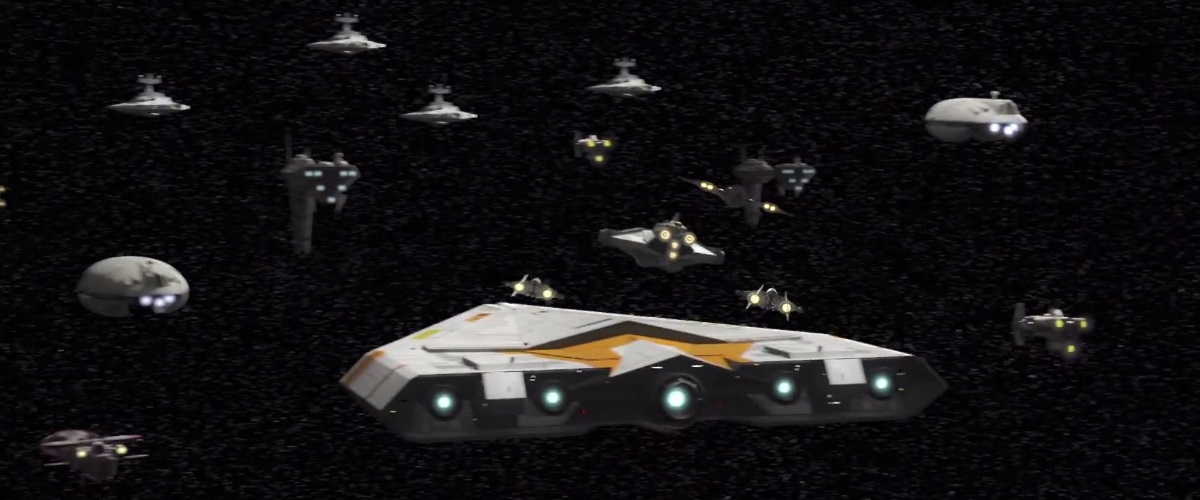
7976 (1 BBY)
The early efforts of the Rebel Alliance had proven limited in the ability to hurt the Empire or its operations, however they did effectively
occupy Imperial resources to the point that planetary struggles against the Empire were sometimes able to gain traction. The civil war
on Mandalore between its Empire-backed leadership and rebel-affiliated clans transitioned during 7976 (1 BBY) into a revolution which
saw anti-Imperial forces on Mandalore claim the mantle of leadership. The Imperial response was measured and political, but would
not succeed in restoring control over Mandalore or the Mandalore Sector, and pro-Empire forces would be largely routed by the time
of the Battle of Yavin. Most of these planetary uprisings were not as completely successful, however they did collectively contribute to
Imperial hesitancy to overreact. The harsh reprisals of the prior year had been politically detrimental to the Emperor, and some restraint
was needed to calm criticism, to keep the situation in the galaxy from spiraling out of control before the Empire was ready to suspend
democracy permanently in the coming year. Having dealt setbacks to the Alliance, the Empire was somewhat patient about this, only
responding in full force to uprisings which threatened their supply lines and strategic resources. Worlds which were primarily of
symbolic importance like Mandalore became proxy wars, with the Empire and the Rebels each aiding and supplying their allies.
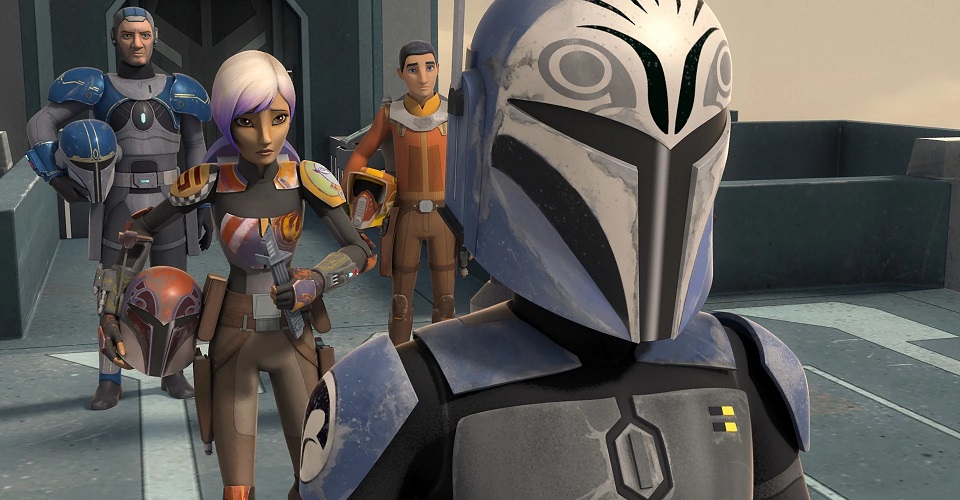
The unification of the Alliance and the growth in recruits and volunteers saw their organization grow significantly during this year, however
the losses in equipment they had incurred in the prior year had once again relegated them to hidden bases, working to gather resources.
Despite maintaining the policy that they were building a defensive coalition against a possible war, the Alliance did continue to use its
hidden fortresses to launch attacks against Imperial shipping, resources, and facilities. These operations were usually conducted by wings
of starfighters or small task forces. The patient tactics of the Alliance led to a split with some of the more brazen elements of the Rebellion,
most notably Saw Gerrera and his Partisans, who had been active partners in the preceding year. The Alliance objected to their many
violations of the conventions on civilized warfare, while they saw the Alliance as philosophically incapable of fighting the Empire. Divisions
within the Rebellion regarding methods, philosophy, and political goals would remain an undercurrent throughout the Civil War.
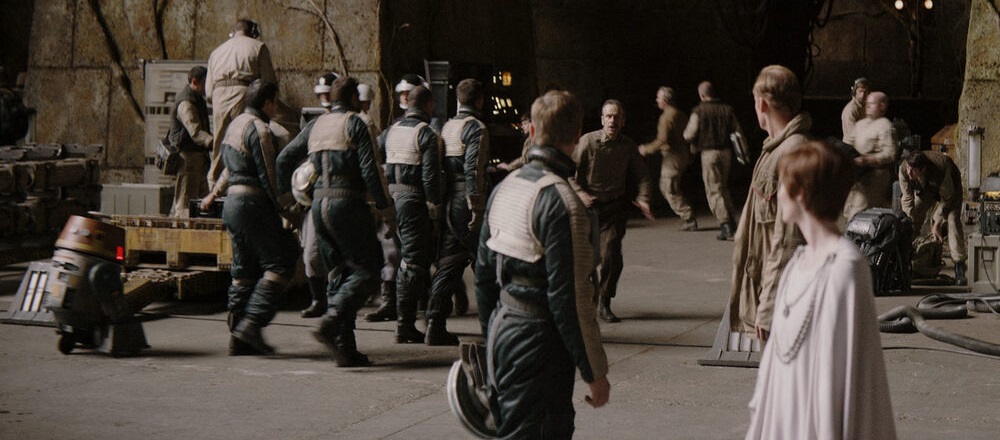
7977 (0 BBY/0 ABY)
Raids by armed Rebel cells increased by 7977 (0 BBY), and while limited in their overall success, they did pose an increasingly dangerous
threat to the Imperial starfleet. The Alliance's assault aimed at the Imperial factories on Lothal was soundly crushed by overwhelming
Imperial defenses, however it did demonstrate that the Alliance's combat capacity was increasing along with their rise in equipment and
personnel. This was in part due to effect that years of low-level rebellion had on the Empire's ability to monitor the minutiae of the galaxy.
The number of people and groups actively involved in resisting the Empire had risen, while the Empire was increasingly occupied with
pressing security concerns. This allowed for independent and illegal manufacturers to begin producing decent starfighters for the Alliance
which could provide them with greater parity against the advanced Imperial fighters. This included Incom Corporation, whose illegal, rebel
affiliate produced quality fighters like X-wings, and Slayn & Korpil, whose secret operations manufactured the highly-advanced B-wings.
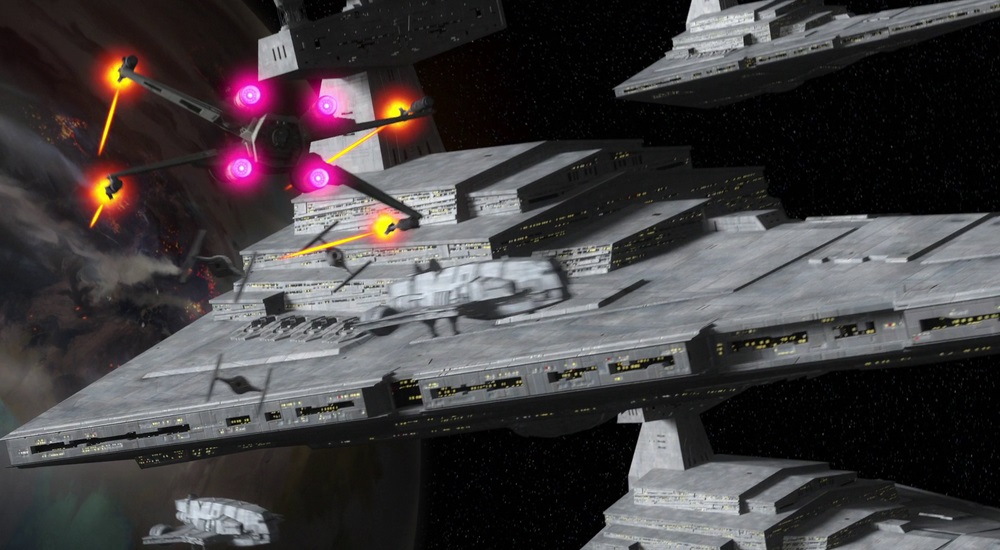
The situation in the galaxy finally came to a head in second quarter of 7977 (0 BBY), when the political traction the Rebellion had gained in
public opinion, combined with a series of Imperial setbacks against planetary uprisings, led the Empire to prepare steps to eliminate
democratic discourse within the Empire once and for all. This was also motivated by apparent progress towards the final completion of
the long-delayed Death Star battlestation, which had lagged behind other aspects of Palpatine's transformation of the Empire, and had
forced him to delay dissolving the Senate and other intended changes designed to further prevent organized opposition. The Imperial
military response to the increasingly numerous planetary uprisings, the complete lack of interest in negotiations shown by the Imperial
leadership, and the ever deteriorating state of individual liberty finally began to build support for the Rebellion in the Senate beyond
those few Senators who had long been critical of the Empire. Uprisings on some notable Rim worlds like Mandalore and Lothal actually
succeeded in defeating the Empire's forces there shortly before the Battle of Yavin. Due to the sensitive political climate, the Empire chose to
wait for the Death Star and the dissolution of the Senate before taking actions in revenge against these worlds, believing victory was at hand.
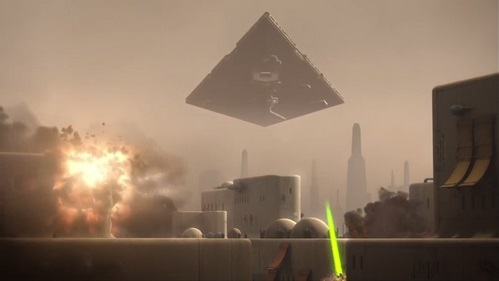
The Battle of Scarif marked the definitive start of open warfare in the Civil War, and was the Alliance's first victory in fleet combat. The Alliance
had finally managed to gather enough trained personnel and equipment to assemble a battle-ready combat division from some of the larger
Rebel cells, but were only moved to sudden action by the discovery that the Empire had just completed a superweapon which might have
made any military victory impossible. The unexpected success of the Alliance in stealing the Death Star plans cost them a great deal of resources,
but provided a slim hope of resisting the battlestation. The completion of the Death Star allowed the Emperor to permanently dissolve
the Senate, having completed his incremental solidification of executive power over the prior two decades. The Rebel victory at Scarif aided by
members of the Senate provided pretext to permanently dissolve that congress. The Empire was now run as a military dictatorship, with
regional governors ruling as petty tyrants through military occupation. The theft of the Death Star plans was a concern, however the arrogant
and power-obsessed beliefs of the Imperial military leaders led them to believe that the superweapon had made them invulnerable.
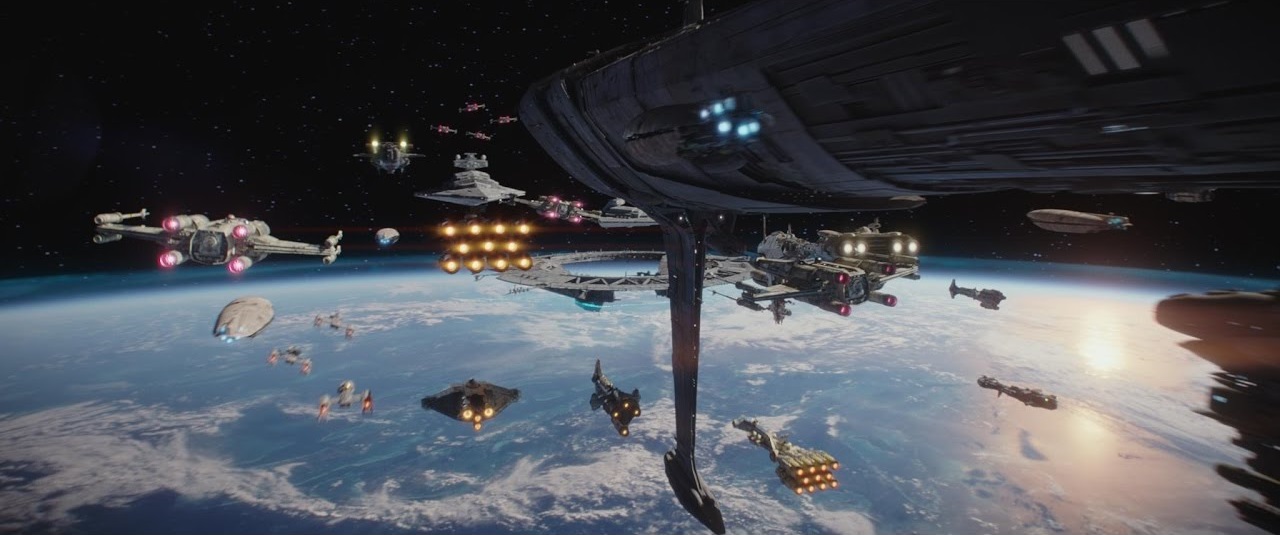
The destruction of Alderaan was a significant moment in galactic history, and a genocide of previously unseen proportions. Alderaan was
chosen in part to manipulate Senator Leia Organa into betraying the Rebel Alliance, but primarily to punish Alderaan for the treason of
its Senate delegation. This was intended to establish a deterrent against any organized, planetary resistance to the Empire, and also to
demonstrate that no planet was too historically important or heavily populated to be given this treatment. Once the planet was destroyed
the Empire's true face was revealed to the galaxy, which created a large surge in support for the Rebellion in public opinion. At the same
time, the prospects which this weapon presented would have caused an increased reluctance for any planet-based rebel activity.
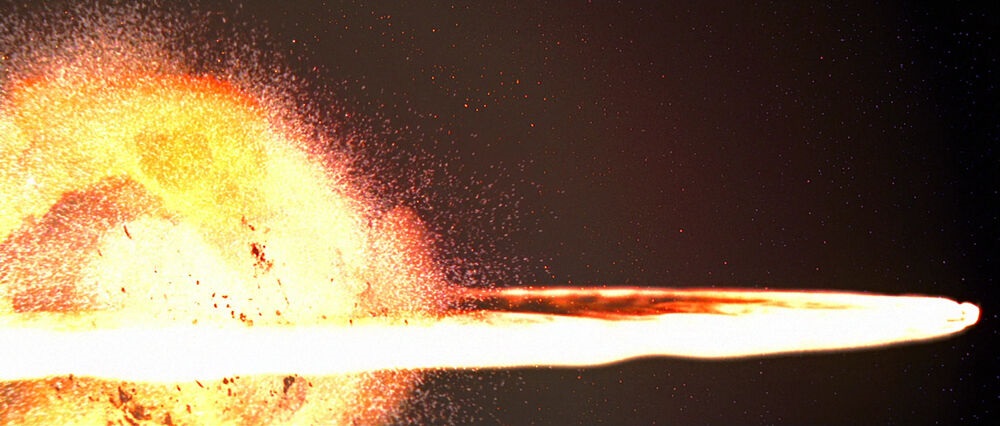
The Rebel victory in the Battle of Yavin was a turning point in galactic affairs more significant that any in the prior millennium, made possible by
the unlikely theft of the station's plans at the Battle of Scarif and the supernatural abilities of an inexperienced Jedi Padawan. The Empire was
able to determine the weakness in the station during the battle by analyzing the Rebel attack, and thus there may not have been a second
opportunity to destroy the Death Star even if the knowledge of the station's flaw had survived what would have been the destruction of Yavin 4.
If the Death Star survived the Battle of Yavin, the destruction of Alderaan would have been largely irrelevant to the Empire, but instead it has
the opposite effect, seriously undermining the stability of the Empire. The Galactic Civil War quickly became a larger conflict, and the widespread
public discontent which was severely exacerbated by the destruction of Alderaan was now emboldened by the proof that even the Empire's
superweapon could be destroyed. The Rebellion grew across the galaxy, both planet-based rebel movements and the Alliance, stretching
Imperial resources, which made the activities of the Alliance more effective and gave them some room to maneuver.
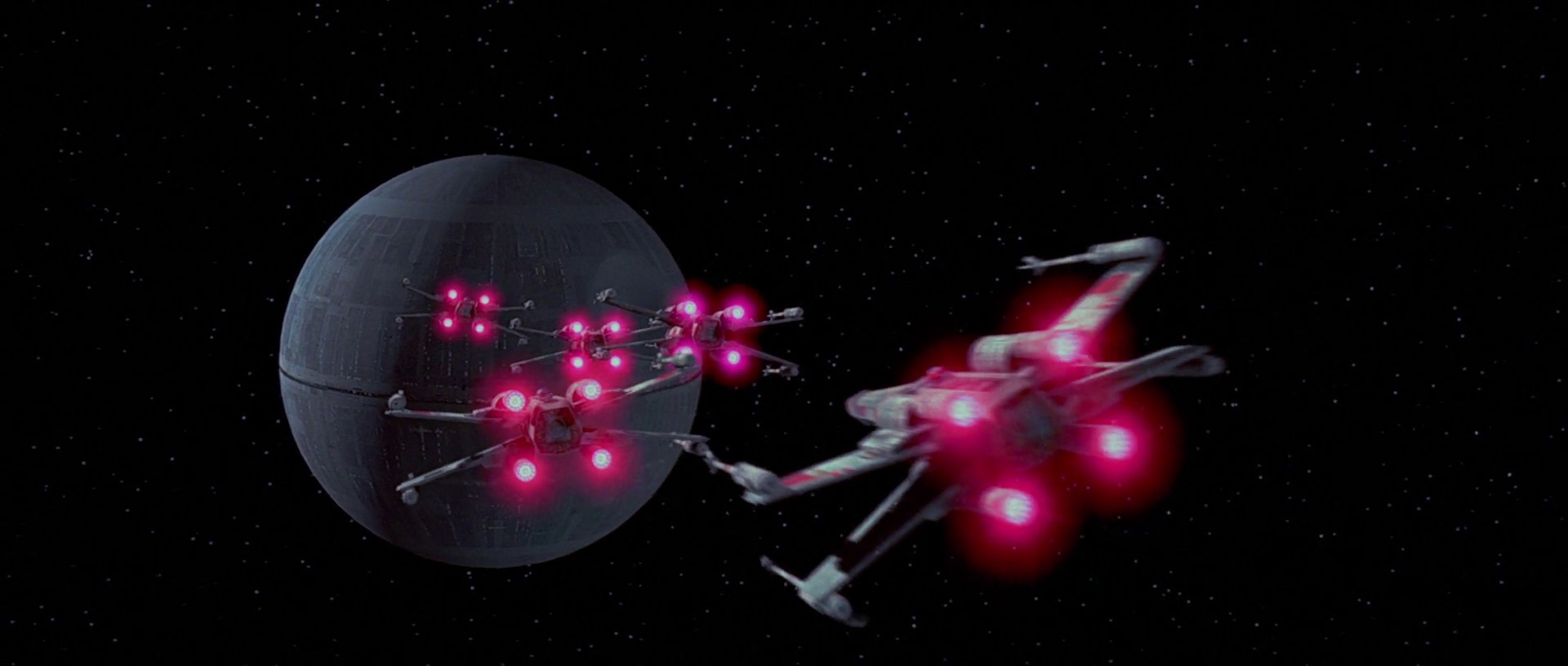
The Imperial response to the loss of the Death Star and their defeats at Scarif and Yavin is to unleash a campaign of savage reprisals against
ongoing Rebel activity, and in particular worlds whose governments had taken a definitive stand against Imperial authority. This was intended
to forestall a mass movement of planetary secession, such as occurred at the beginning of the Clone Wars, which would provide the Rebellion
with an industrial base and population from which to actively recruit. The increased exploitation of the galaxy's labor potential became
a matter of some urgency, in order to ready Imperial forces and ramp up military production. This program had been advancing incrementally
and with political tact, but could now be carried out in full view of the galaxy without concern for the Empire's image. Rebel propaganda
efforts following the destruction of Alderaan had already undermined the narrative that the Empire really wasn't as bad as its enemies claimed.
The loss of the Death Star made it imperative that the Empire demonstrate that it did not need a superweapon to destroy entire civilizations,
and to prove to the galaxy how easily the same could be accomplished with conventional arms, military occupation, forced labor, and slavery.
The occupation and repression of many worlds whose political leaders had seized the opportunity to speak out against the Empire forced
the Alliance to adjust their strategy, shying away from major systems and focusing on more attainable goals in the Rim regions. Planet-based rebel
movements also adjusted to focus on Imperial resources rather than seizing control of the local government, to avoid drawing similar reprisals.
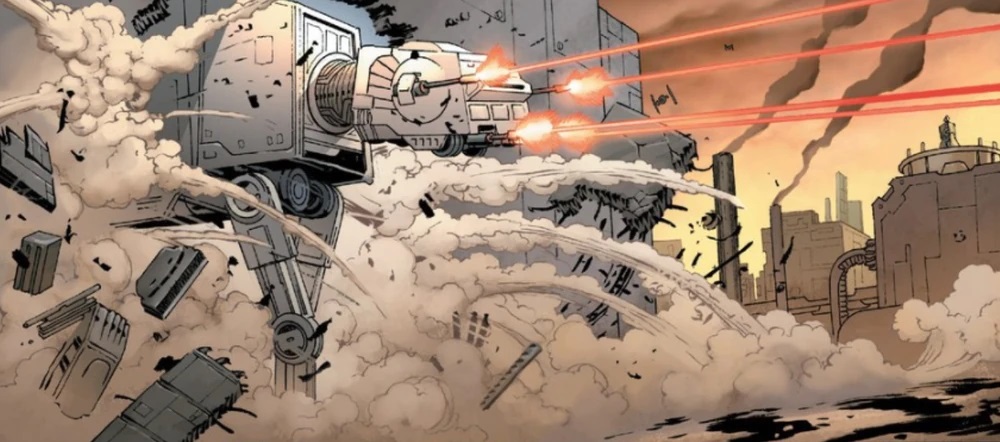
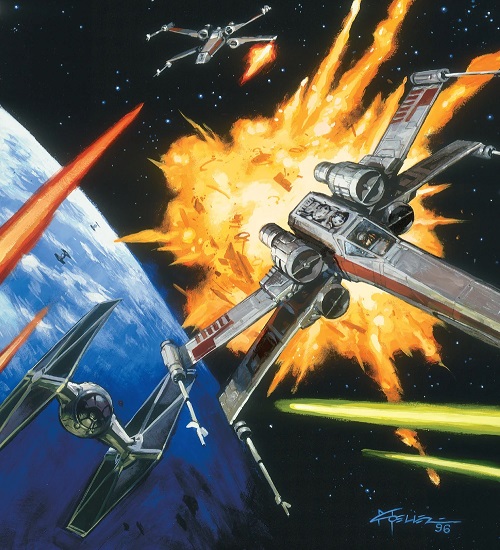
7978 (1 ABY)
The Alliance accumulated significant amounts of equipment and large numbers of volunteers during the six months after the Battle of Yavin,
and by the beginning of 7978 (1 ABY) were ready and eager to begin a full theater-wide offensive. Rebel forces launched a series of assaults
from their holdings in the Outer Rim into several adjacent Mid Rim sectors aimed at establishing a regional base of liberated planets, and
creating a stable frontline which Rebel forces could rally behind. Aided by defectors within these sectors' military governments, Rebel army
units engaged in several planetary invasions to remove Imperial ground forces, aided by elements of the expanded Rebel fleet. After months
of fighting, the Rebels had managed to take control of numerous worlds and to drive the Empire from some subsectors of space, however
they had incurred heavy losses. The Imperial response had been relatively restrained, as the forces allotted to this front had already begun
to stabilize the situation around the small pocket of Rebel control. This tactic aimed at drawing as much of the Alliance's resources into this
campaign as possible to meet an eventual crushing counterattack. The limited success of this campaign forced the Rebels to deploy their
planet-based army units and supporting fleets across an increasingly-wide front, thinning their already vulnerable defense. The Alliance's
lines collapsed at several key points during the Imperial counterattack later in the year, forcing the Rebel forces to fight a bloody holding
action to allow the bulk of their remaining forces to withdraw from the region. Despite the Alliance's forces withdrawal from the Mid Rim
campaign, Imperial victory in this region was not total, and local Rebels and Alliance elements would contest this region into the next year.
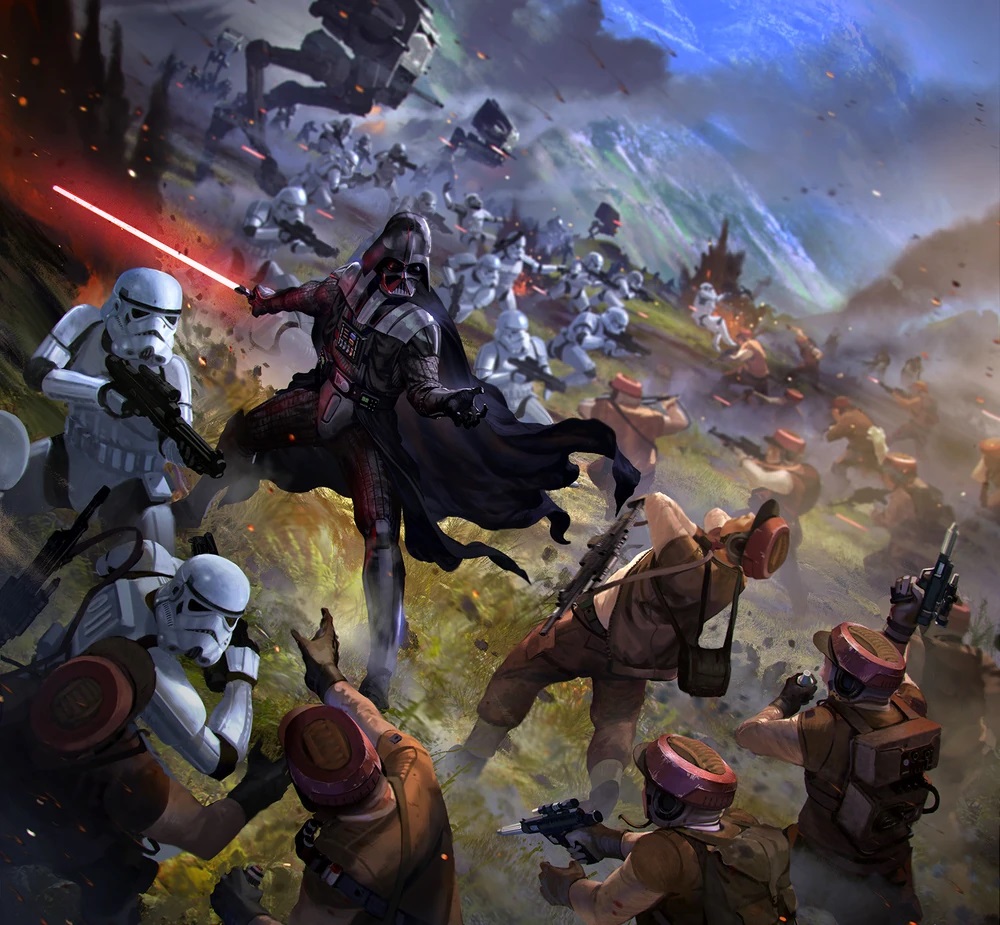
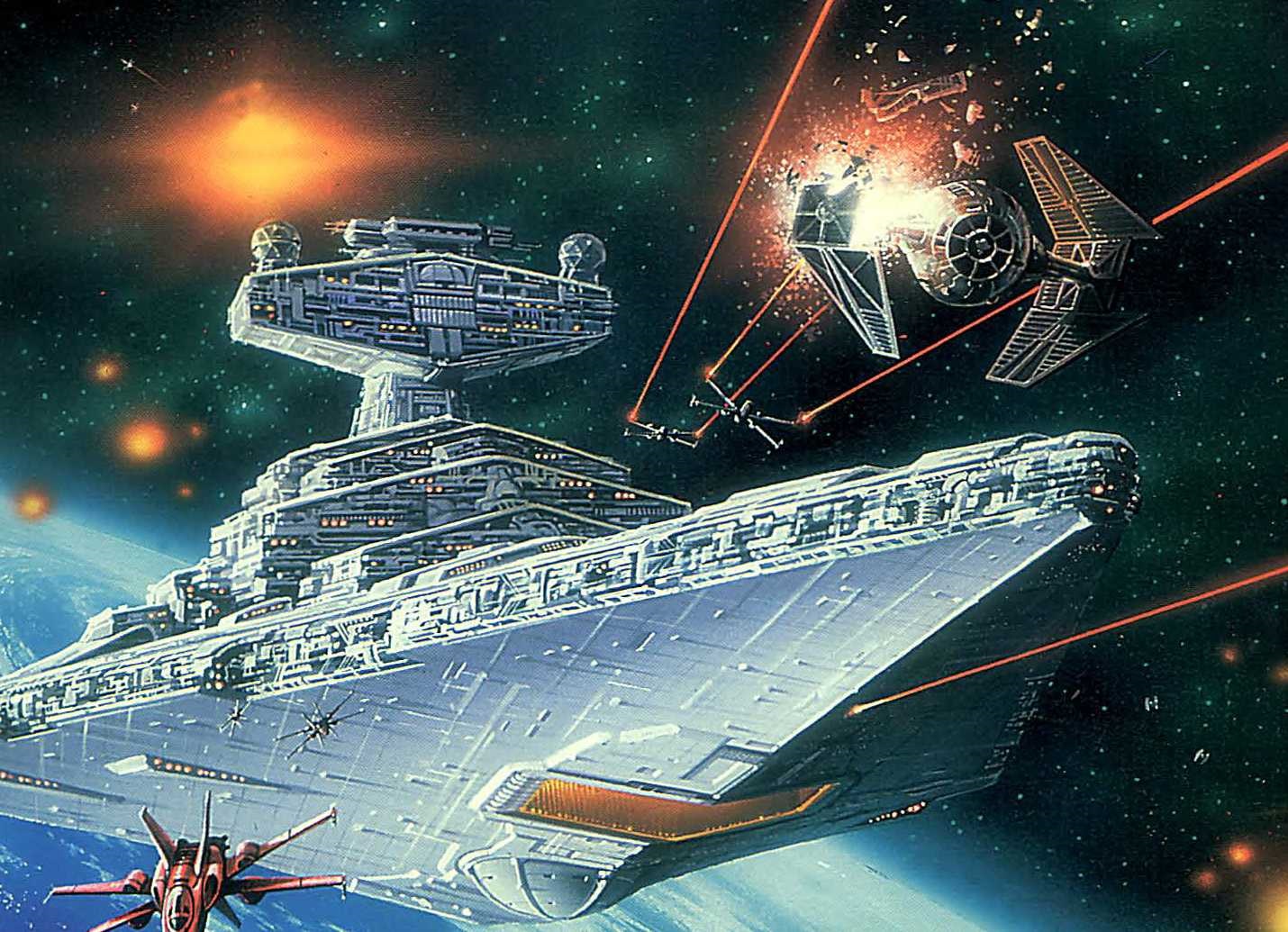
7979 (2 ABY)
Imperial fleets continued to dominate the galaxy with little resistance after the heavy losses to fleet resources suffered by the Alliance in
the first year and a half after the Battle of Yavin. The Empire moved to deny the Alliance as much movement in interstellar space as
possible, knowing that their organized Rebel military was increasingly confined to space. The Rebellion had mostly gained strength across
the galaxy, despite the setbacks of the previous year and not controlling any regions of interstellar space or populated planets outside of
isolated examples in the Outer Rim. While the Empire had the upper hand in the Civil War, it was dealing with two primary strategic
challenges, the first being rebellious populations and local insurgencies on many thousands of planets, and the second being the elusive
Rebel fleets conducting a guerrilla war against their resources. This meant the Empire must deploy their fleet broadly, both as defensive
forces around critical planets and facilities, and as offensive fleets hunting for Rebel fleets and facilities. These advantages for the Rebels
were somewhat limited by the difficulty of amassing large enough fleets to take down targets of sufficient value to warrant the inevitable
losses. While the Rebel Fleet was still larger than it was before the Battle of Yavin, its total number of ships was still a limited resource.
Imperial starship production suffered only minimal disruption during the first two years after Yavin, replenishing much of their losses.
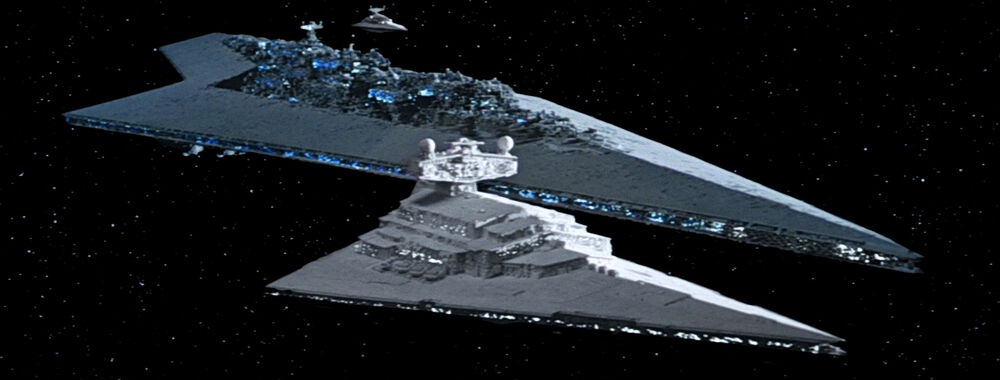
Planetary uprisings across the galaxy continued, and while generally still meeting stiff Imperial resistance, the effect of two years of
combat on the Imperial army has strained their resources and personnel far more than those of the Imperial navy. The Empire is unable
to rely as heavily on conscription, increasingly valuing loyalty to the Empire amongst its troops out of necessity. Nevertheless, there are
millions of volunteers willing to join the fight to preserve the Empire. The Empire rightly assessed that the key to victory was the defeat
of the Alliance, and thus it devoted its best units to search for and destroy them. Attempts by the Alliance to establish bases or aid local
allies were increasingly crushed by these Imperial forces, whose freedom to go on the offensive was enabled by the growing stability
of the battle lines in the war. While the number of worlds with active rebellions had skyrocketed, and the majority of these groups were
at least coordinating and sharing intelligence with the Alliance, the Alliance was again far too weak to defend a planet even if the local
rebellion overthrew the Empire there. However, the Alliance had grown to include operatives, cells, or factions on thousands of worlds.

7980 (3 ABY)
7980 (3 ABY) was "a dark time for the Rebellion", as the Empire was once again firmly in control of the situation in the galaxy, and was
pressing its advantage. Rebel armies, cells, and fleets continue to oppose the Empire, but the situation in space more closely resembled
that of the period immediately before the Battle of Yavin. The Alliance's organized military had taken to the metaphorical hills, fighting
a guerrilla war and offering what support they could to Rebel movements throughout the galaxy, operating from mobile fleets in
interstellar space and from hidden bases on remote, unpopulated planets. The Imperial efforts to eradicate their bases were successful
enough that the Rebels were largely stuck in space, and despite their fleets once again starting to grow larger, the lack of support
facilities and repair bases for their ships and fighters severely limited their further growth. The armed forces of the Alliance fleet and
army were also a fair degree larger than they were at the outset of the war, however troops were widely dispersed, and the fleet was
still composed mainly of military transports as opposed to heavy battle-capable warships. Imperial resurgence had made finding fuel,
food, and ammunition for these forces increasingly difficult, making it difficult for the Alliance to think about resuming larger offensives.
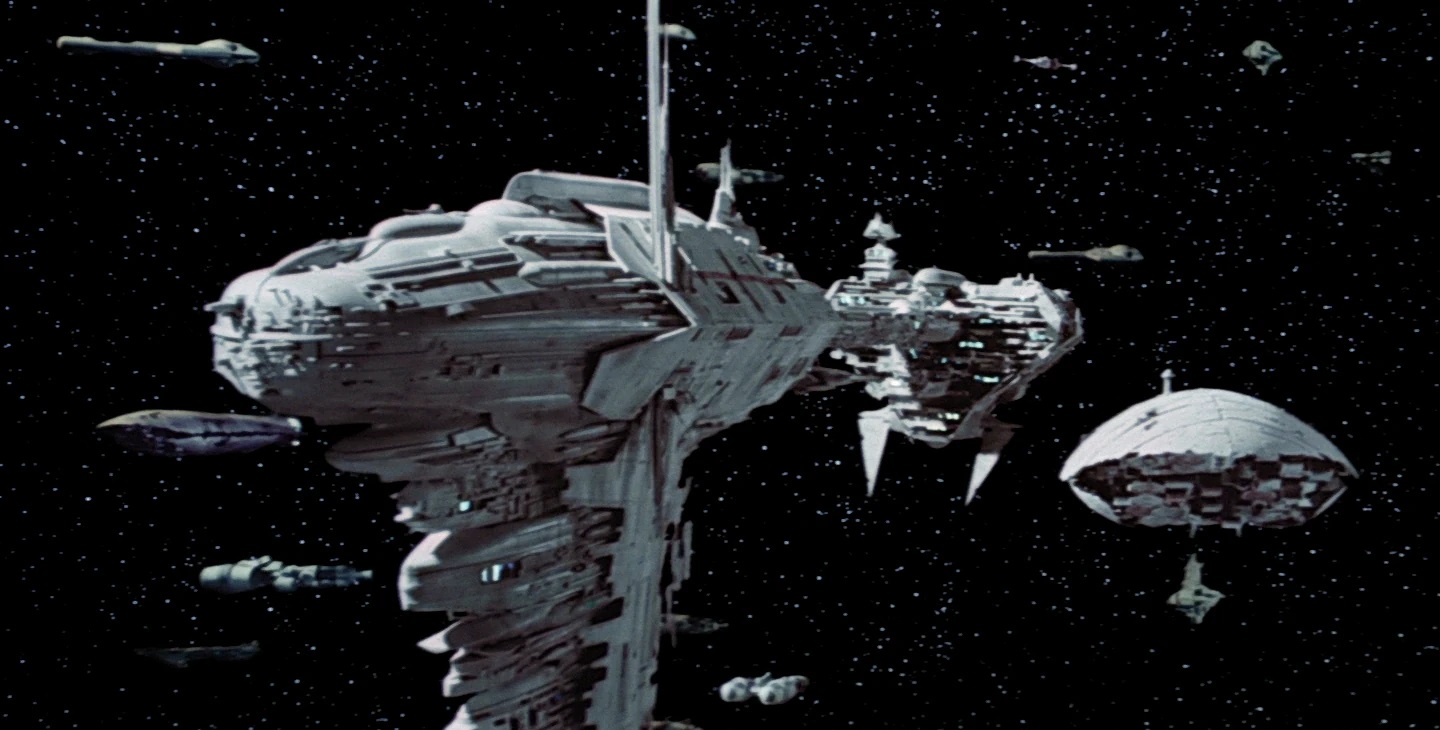
The need for bases to station their ground forces and repair their equipment forced the Alliance to separate its forces into small units
stationed at small, remote outposts. These fortresses were typically short-lived, and the practice of stationing smaller groups was
intended to prevent major losses in a worst-case scenario after an Imperial assault. At the same time, even a short period of operation
from a hidden base provided an excellent platform for the Alliance's current mode of combat. The Battle of Hoth was an example of
how short-lived these installations could be, as it was discovered and destroyed by the Empire before it was fully operational. Once
discovered, these forces were too small to withstand a full Imperial assault, and could only find victory by successfully evacuating
as much of their personnel and equipment as possible. Alliance activity became largely confined to fleet-based operations.
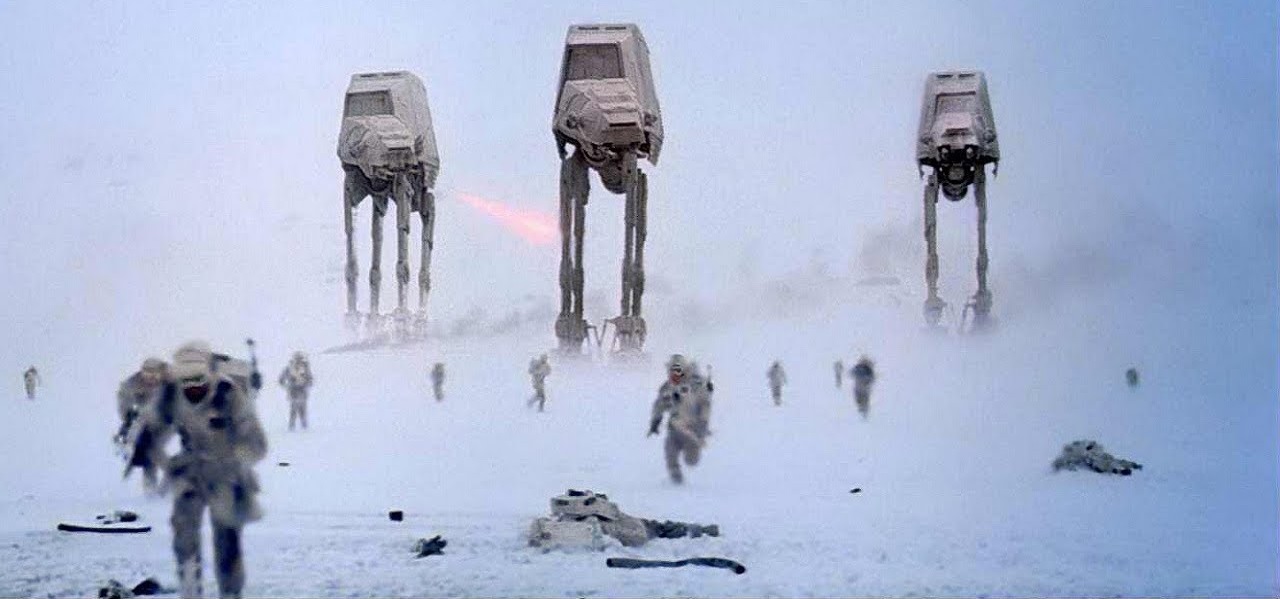
The Imperial response to planetary rebellions which gained irreversible traction was to launch genocidal campaigns of total war against
those worlds using conventional weapons, employing a 'scorched earth' policy. This was intended to remove hope of liberating worlds
by military force from local resistance forces, knowing that victory would mean total annihilation. The destruction of Mandalore by
Imperial fusion bombs was retaliation for the success of Lady Bo-Katan's revolution. This and other extreme responses by the Empire
were strategically necessary according to Palpatine's objectives, as anything which he could not possess and control must be destroyed
so that no one else can use it against him in any way. The destruction of Mandalore was a message similar to that delivered by
the Death Star at Alderaan, a last resort to be used after any planet succeeds in driving off the Empire's forces.
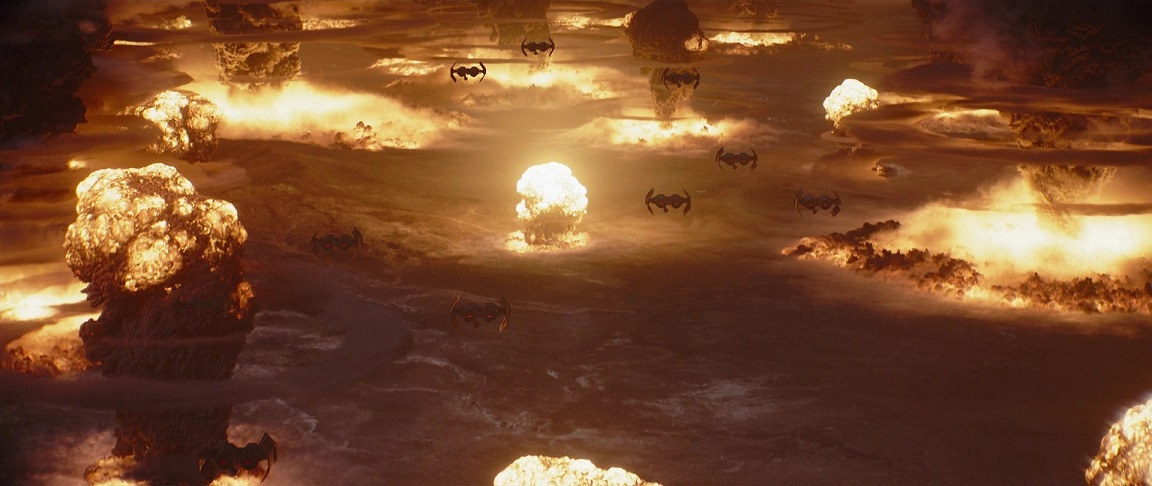
7981 (4 ABY)
The Imperial fleet was increasingly spread across the galaxy trying to draw out the Rebel fleet, and despite their dominance in space
the Empire's internal situation was precarious, with worlds damaged from conflict, active rebel groups on countless worlds, supply
lines and workforces disrupted, and constantly policing defeated worlds with disgruntled citizens. The construction of a second
Death Star was undertaken immediately after the loss of the first station, intending to regain the needed advantage the Empire lost
during its unexpected destruction. The weapon also provided the possibility of finally eliminating the troublesome Rebel fleet, which
is why the Emperor engineered a trap using himself and his newly operational Death Star to lure the Alliance into amassing their forces
for destruction. His overconfidence inspired by his unwavering belief in the accuracy of his prophetic vision led to the death of
the galactic tyrant and the loss of the second Death Star. The Battle of Endor was the pivotal battle in the Galactic Civil War which
completely reversed the tide of war and turned the Rebels from a struggling insurgent movement into a galaxy-wide revolution.
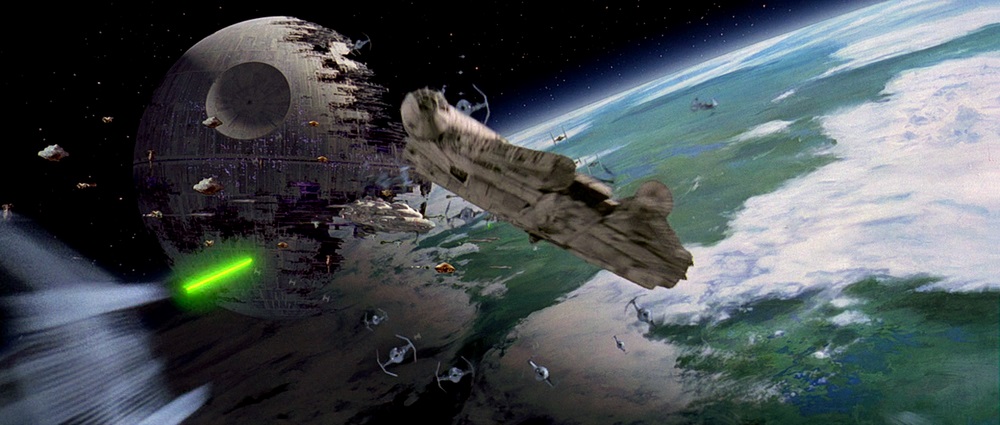
The death of Palpatine generated a wave of excitement about the future and a feeling of liberation in the galaxy, significantly magnifying
the turmoil on many Imperial worlds, and percipitating a true civil war within galactic society. Imperial attempts to crush celebration
on Coruscant led to riots and began a series of conflicts which would last for over a year, collectively known as the Coruscant Civil War.
Despite the precarious security situation on the capital planet, Grand Vizier Mas Amedda continued to administer the Empire as legal
proxy for the deceased Emperor from Coruscant. His administration was hamstrung from the beginning, completely occupied with
the uprising on Coruscant and throughout the Imperial domain. The regional territories and even individual sectors of the Empire were
increasingly governed autonomously by local Imperial authorities. These were often power-hungry individuals to begin with, and many
became reluctant to use the forces under their command to aid other regions of the Empire. The immediate effect of the broadcast of
the Death Star's destruction emboldened rebellions, decreased morale and loyalty amongst Imperial troops, and led to a general lack
of faith in the long-term viability of the Empire. This fragmentation of the Empire was rapidly accelerated in the first month after Endor.
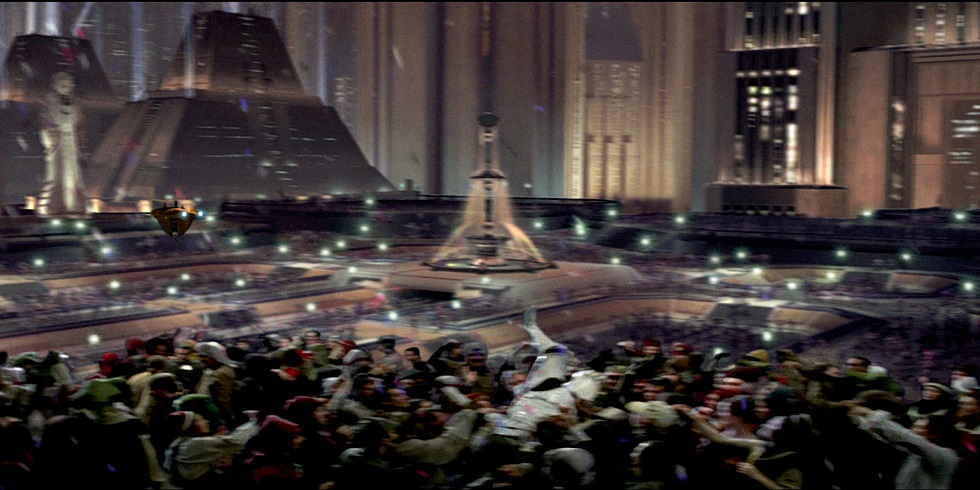
Immediately after his death, Palpatine's most loyal and hardcore supporters within the Imperial power structure received his posthumous
orders to execute Operation: Cinder, an atrocious series of reprisal attacks against the Emperor's enemies and malicious attempts to
destroy valuable worlds which had been loyal to his regime. Mon Mothma's homeworld Chandrila and Palpatine's homeworld Naboo
were both targeted for destruction, but were saved by timely intervention by the Alliance. Many worlds were not so lucky, some falling
victim to systems of satellites designed for this operation which devastated planets by creating intense, violent storms. This program also
included reprisals against people, groups, and companies who had contributed in some way to the downfall of the Emperor, as well as
wholesale attacks against worlds which were supportive members of the Empire, targeted to deal devastating blows to the galactic
economy and society. After the initial devastation and atrocities, most of this activity was quickly ended, either through the efforts of
the forces of the rapidly growing Alliance, or by Imperials who were outraged by the attacks against planets they firmly controlled.
The effect of Operation: Cinder was the rapid erosion of Imperial credibility, even amongst many who had favored the Empire over
the Rebellion. The need to establish a new interstellar order led to endless power-struggles and internal wrangling on planets and
in starsystems where Imperial rule had temporarily remained stable. The Alliance was inundated with craft, equipment, and volunteers.
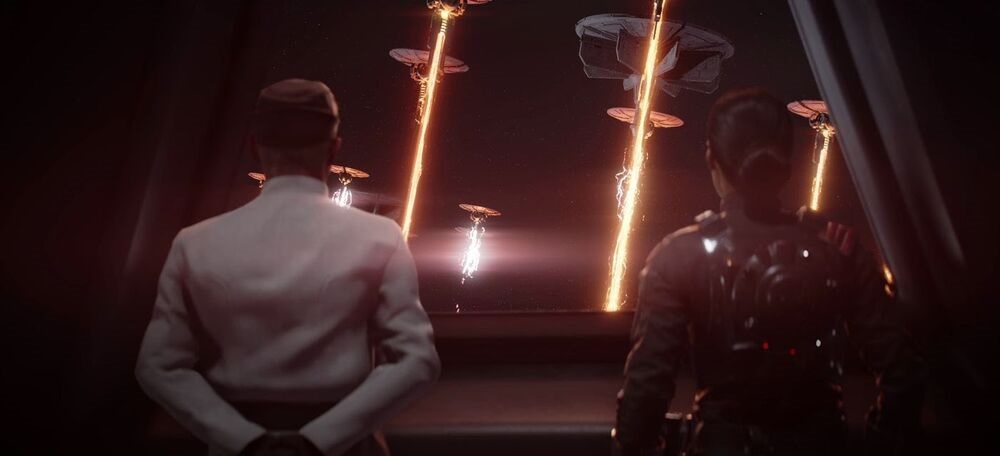
The New Republic was declared about a month after the Battle of Endor, and in the wake of the horror of Operation: Cinder. The Alliance's
governing Council were installed as the interim government, with Mon Mothma as interim Chancellor. The Alliance military was reorganized
as the New Republic Defense Forces, and quickly began a series of regional campaigns aimed at establishing safe regions around liberated
planets which could be made free of Imperial forces. The liberation of Naboo provided a base from which the New Republic was able to
mount a significant campaign in the Trailing Sectors. Additional campaigns in the eastern Rim, the galactic south, and in the Slice region
rapidly increased the New Republic's territorial control and base of support planets. Significant numbers of worlds in the Core also joined
the New Republic, particularly along the Perlemian Trade Route and in the Southern Core. Fighting in the Core was mostly limited to
naval combat, as neither side was in a position to mount planetary invasions of heavily populated worlds. After the declaration of the New
Republic, the fracture of the Empire accelerated, with most areas of Imperial control outside of the Core acting as smaller independent
states, nominally loyal to the Imperial Core, but in practice entirely concerned with their own stability. The Ruling Council on Coruscant
was increasingly powerless to influence the Imperial fragments in the Rim, and its control within the Core was often tenuous. An Imperial
attempt to reorganize forces in the southern galaxy was sabotaged by the New Republic forces, however this largest and most stable
Imperial remnant began to act as its own center of the Empire, led by the Imperial Future Council and Grand Admiral Sloane. She was
in fact a proxy for Gallius Rax, who unbeknownst to her was actually a hardcore Palpatine loyalist who intended to seize leadership.
Several months after Endor, the security situation around Chandrila in the Core was sufficient to convene the New Republic Senate there
as their new capital. The momentum and progress of the war which the Empire largely enjoyed up to the Battle of Endor had swung
entirely in the direction of the New Republic, and its forces were rapidly approaching parity with the divided strength of the Empire.
At the same time, Imperial forces remained potent, and were still coordinated enough to mount resistance to New Republic campaigns.
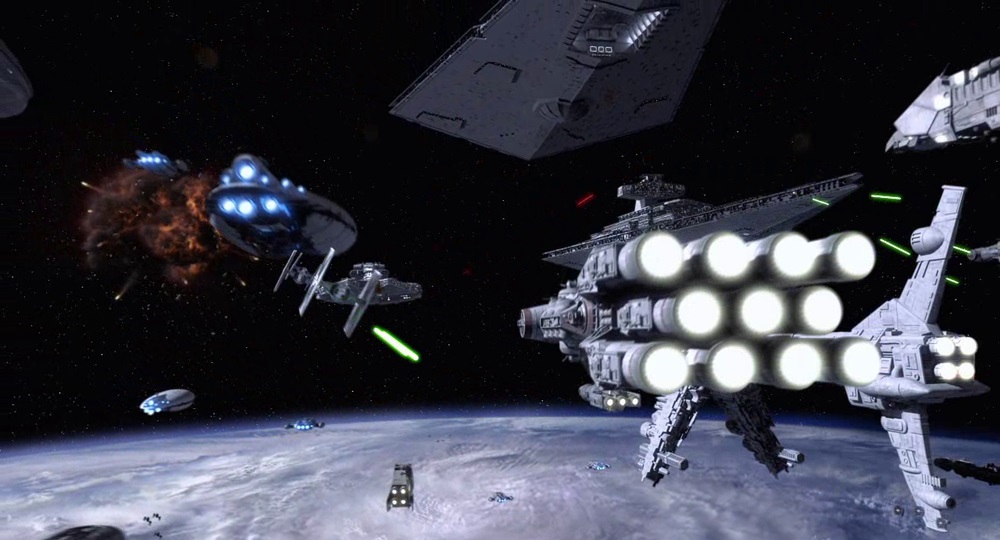
Near the end of 7981 (4 ABY), the initial chaos caused by the Battle of Endor had subsided to some degree, and more stable battle lines
were established. This new balance in the conflict placed the New Republic's forces on relatively equal footing with those of the Empire,
however they had the advantage due to the lack of Imperial unity. The New Republic fleet continued to grow along with its army, while
Imperial resources were dwindling. Infighting, desertion, defection, and warfare against the New Republic had severely eaten into
the Empire's prior massive advantage in personnel, and Imperial production was largely stopped by complete supply chain disruption
or collapse, the loss of shipyards and fabrication facilities, and the increasing shortage of loyal workers. The New Republic began to
expand its offensives in the Core, and eventually moved against the important city-world of Troithe. The cost of the Republic victory
there led the New Republic to reconsider plans to invade other heavily populated worlds, preferring instead to adopt a policy of
containment around Mas Amedda's increasingly impotent Imperial Core. Gallius Rax's remnant under Sloane's command emerged as
the only large, united, and stable Imperial power which still retained some production and offensive potential. This drew increasing
targeting by the New Republic, while other stable Imperial remnants were reluctant to share forces needed to protect their holdings.
This led to situations such as the Battle of Chadawa, which was a three-way battle between two Imperial factions and the New Republic.
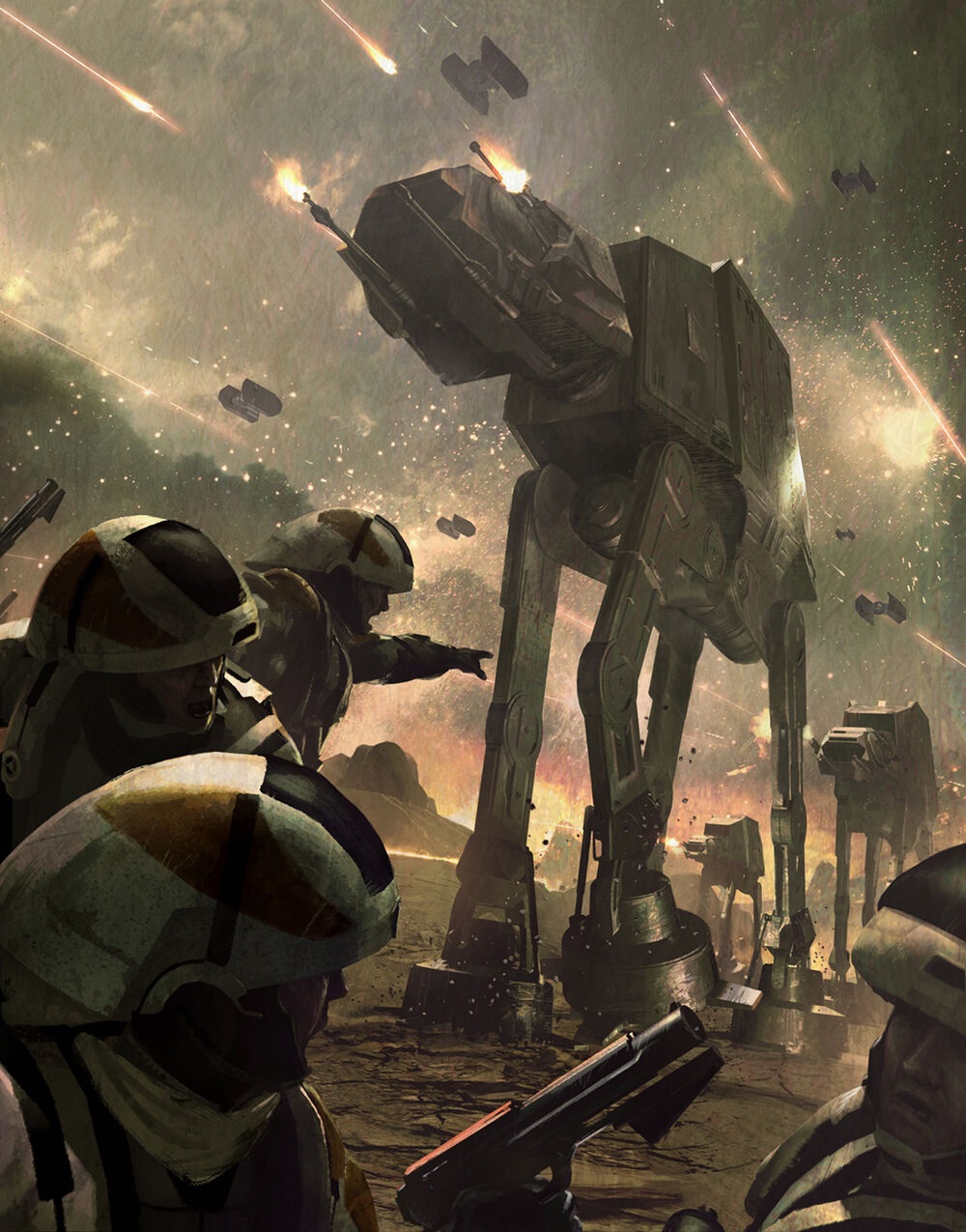
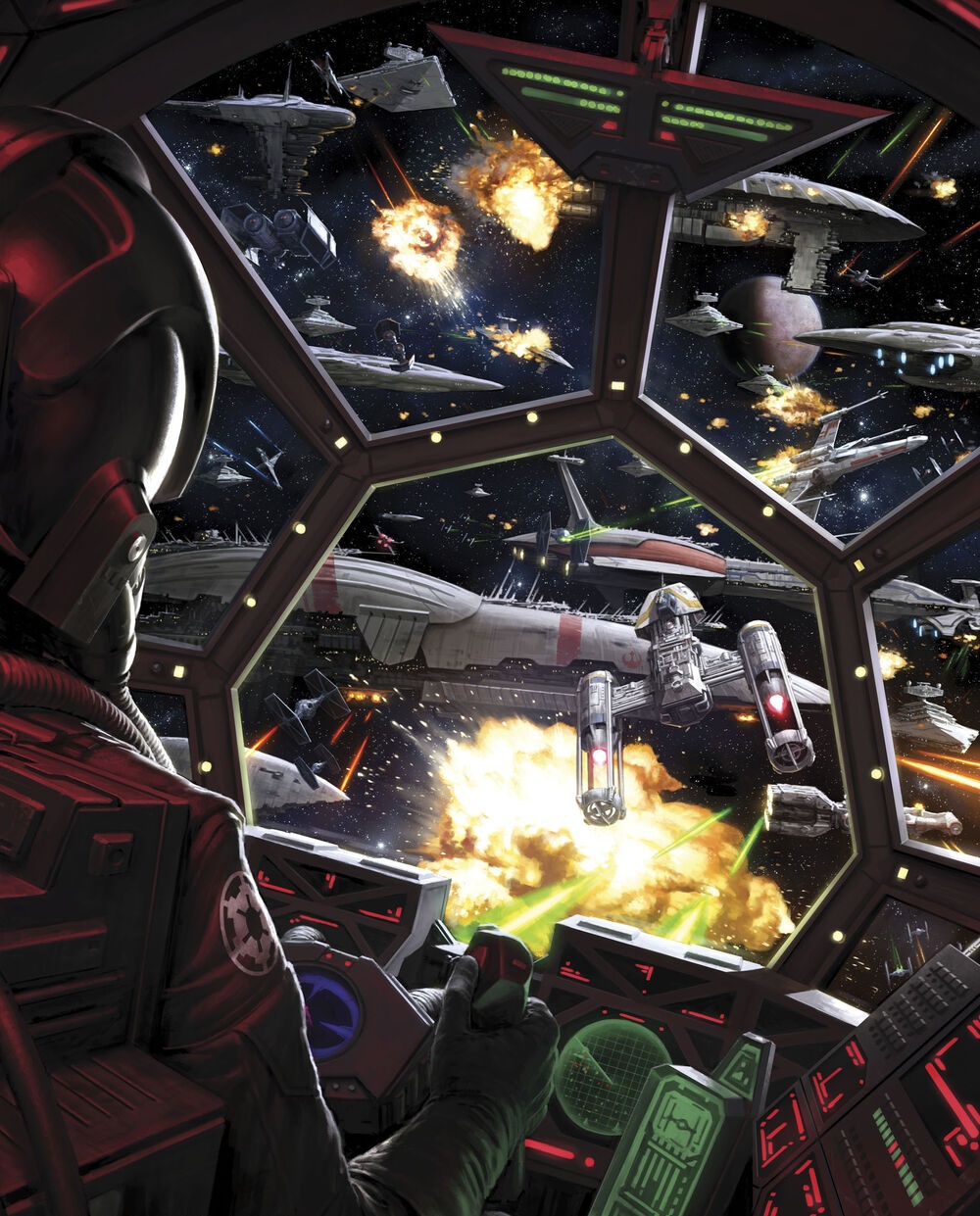
7982 (5 ABY)
Almost a year after the Battle of Endor, the Imperial Core's eventual defeat had become inevitable. Mas Amedda was having trouble
holding Coruscant against the rebellion there, and offered to surrender in exchange for the safety of the ruling council. This was
rejected by the New Republic, who insisted any surrender include Sloane's Empire in the galactic south. New Republic forces were
definitively the side with the operational initiative, increasingly targeting the most vital portions of the remaining Imperial apparatus.
The Battle of Kuat saw the New Republic take control of the largest and most vital Imperial shipyards, one of the last major installations
still producing the vessels and equipment used by the Rax's Imperial fragment, which by now had more control over remaining forces
in the Imperial Core than the council on Coruscant. The loss of Kuat indicated to Sloane the inevitability of a New Republic victory in
the entire war, leading her to betray Rax's plans to assassinate the New Republic's leadership, and offer to engage in substantive
peace talks aimed at ending the war. The New Republic accepted this offer, but the actual talks would take months to develop after
Sloane was forced to flee from Rax's jurisdiction. New Republic victories in the Rim regions continued to mount, and longstanding
Imperial occupations of enslaved worlds were finally ended, such as on Kashyyyk, which was finally liberated almost a year after
an initial New Republic attempt failed. Imperial remnants were increasingly relegated to the worlds most loyal to the Empire.
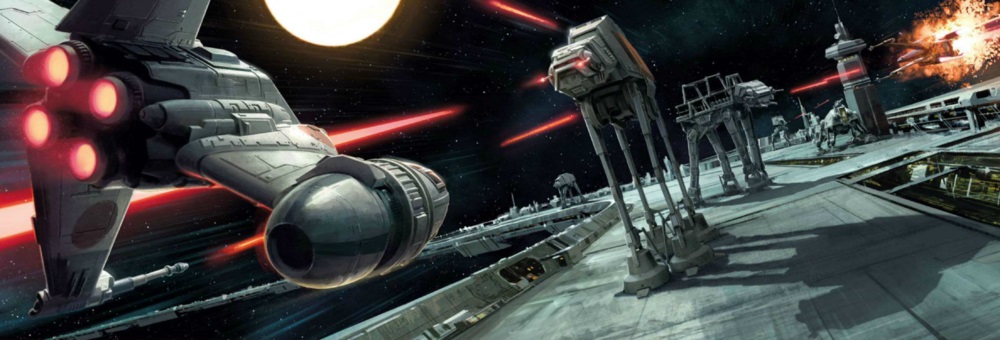
Gallius Rax officially declared himself Counselor to the Empire, and although ruling the Empire from the galactic south, forced Mas
Amedda to lend his support to Rax's claim of leadership. In order to enact the last phase of Palpatine's contingency in event of his
death, Rax begins to assemble large portions of the forces still available to him around his homeworld of Jakku. Over the next few
months, the New Republic made major progress against Rax's remnant in the Western Reaches, and also succeeded at fully driving
the Empire's forces from the Southern Core. The New Republic assembled six large fleets positioned along Corellian Trade Spine,
defending their holdings and positioning themselves for a final large-scale offensive against Rax's domain. The New Republic forces
advancing from the Trailing Sectors approached the Hydian Way, and engaged Imperial forces in a fierce battle at Xagobah. Although
the New Republic was now the most powerful faction in the galaxy, its actual hold over the devastated and fragmented galaxy was
very limited, and it increasingly had to contend with new centers of regional power which were not Imperial. These included pirates,
powerful criminal syndicates, opportunistic regional despots, and former Rebel Alliance supporters and members who split off
and now styled themselves as the New Separatist Union, intending to revive confederate politics instead of building a new Republic.
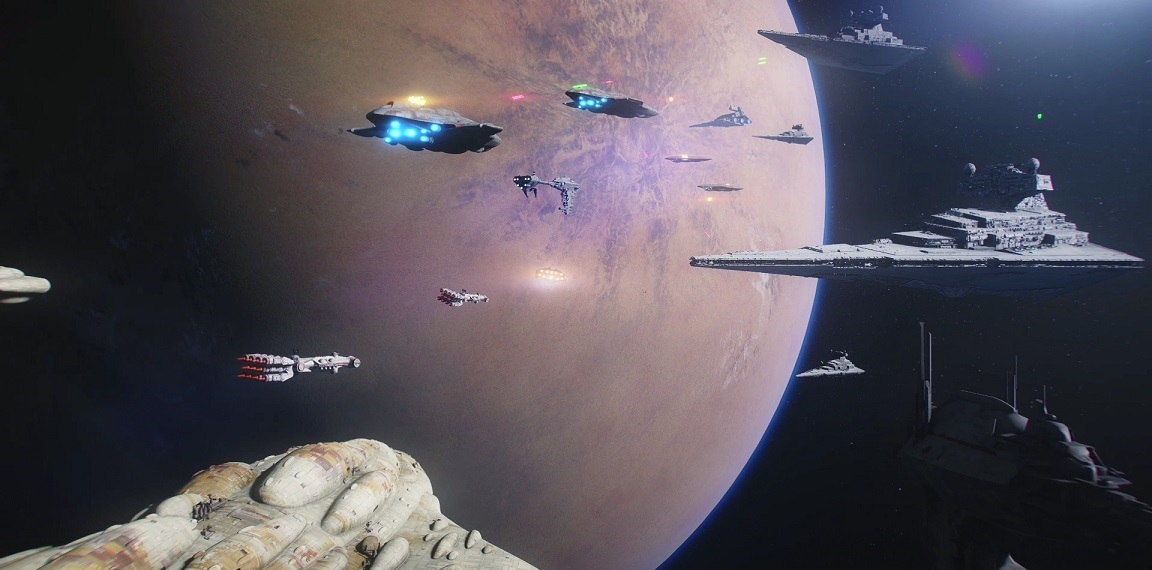
The final large-scale engagement of the Galactic Civil War was the Battle of Jakku, which took place about 14 months after the death
of the Emperor over Endor. Rax completed assembling his remaining forces over Jakku, intending to prompt the New Republic to
send a sufficiently large force to effectively combat his large armada. His intention was to use an ancient Sith weapon provided to
him by Palpatine to trigger an eruption in Jakku's core which would destroy the planet, his remaining Imperial fleet, and all New
Republic forces which had been sent. He was killed by Sloane during the battle before enacting his plan. The Battle of Jakku
was nevertheless fought to its conclusion, including a costly naval battle followed by months of combat on the surface.

The Galactic Concordance was signed by Mon Mothma and Mas Amedda on Chandrila immediately following the Empire's defeat in
the naval battle over Jakku, marking the official end of the Civil War and the Galactic Empire. The New Republic accepted the surrender
on condition that all Imperial forces ceased fighting, and Coruscant was turned over to the New Republic. The remaining Imperial
remnants in the Core were permitted continue to exist as Imperial rump-states, provided that all elements of the Empire's fascist
government were disbanded, military recruitment and training was ended, and the remaining forces of the Imperial navy were
confined to the remaining Imperial territory. Blanket immunity was extended to all Imperial officers who accepted the surrender,
provided they weren't already wanted for war crimes. Remote Imperial remnants in the Rim were also allowed to continue to govern
their holdings for the time being, provided they adhered to the terms of the Concordance. Those elements of the Imperial military
who refused to accept the surrender withdrew to these Rim remnants, and the New Republic would spend many months battling
remnants which refused to stand down. Although active combat eventually ended, several illegal Imperial outfits remained around
the Outer Rim, outside of the effective reach of the New Republic. As a result, in some ways the Civil War did not truly end here.
The official conclusion to the Civil War did bring a much-needed end to a war which had irreparably damaged galactic civilization.
